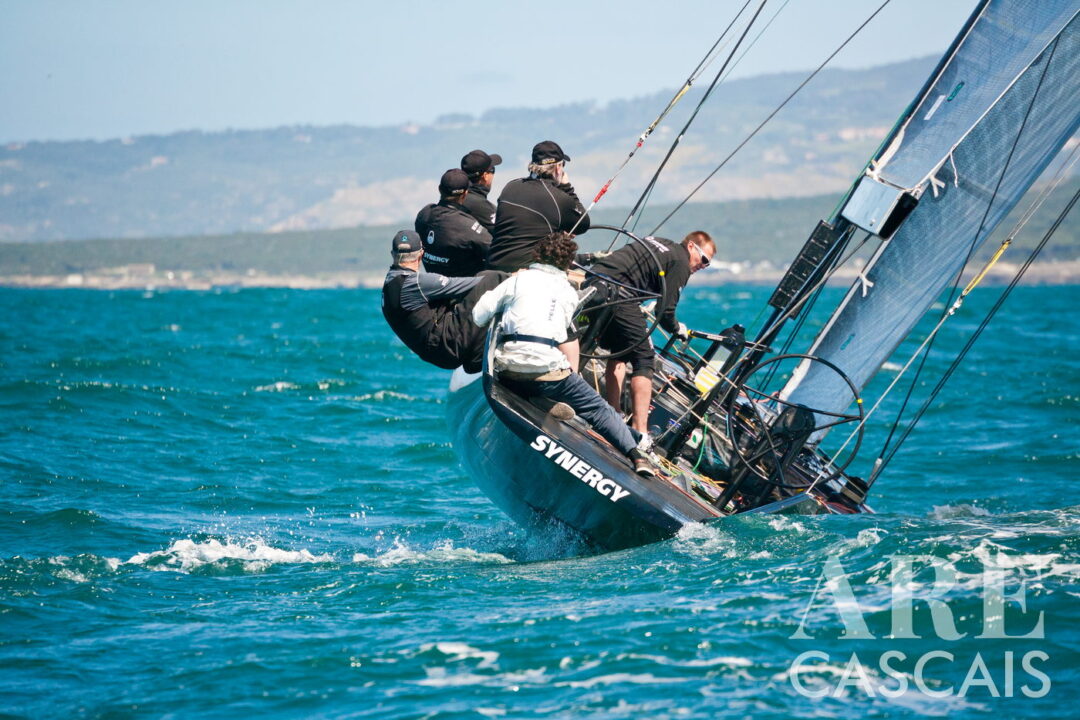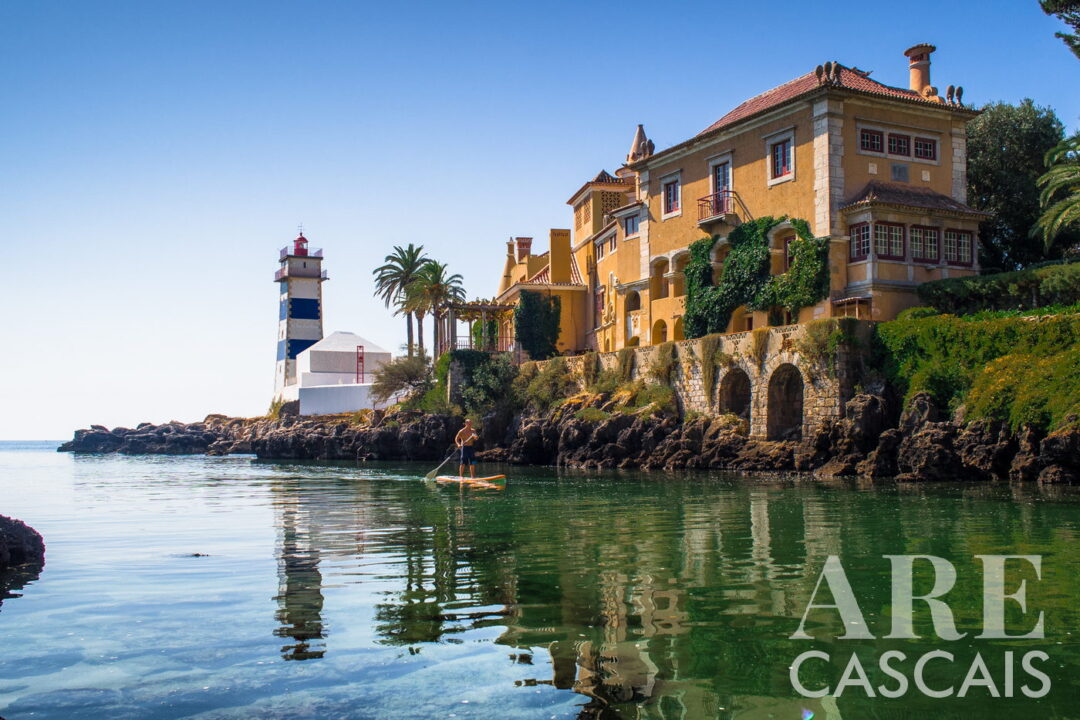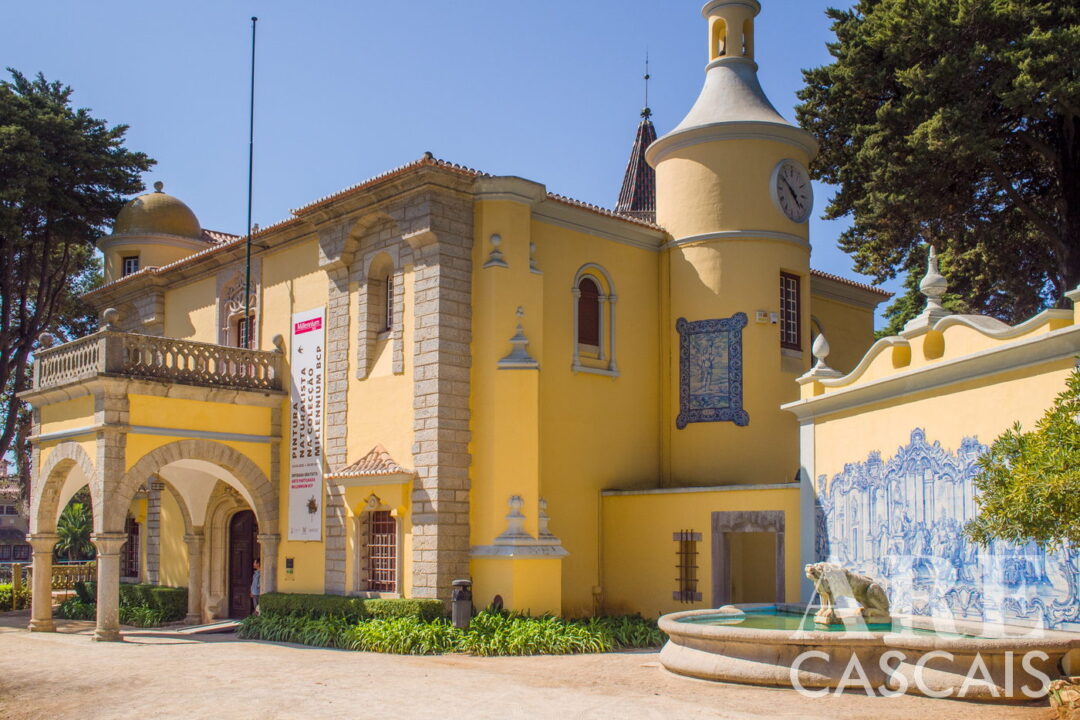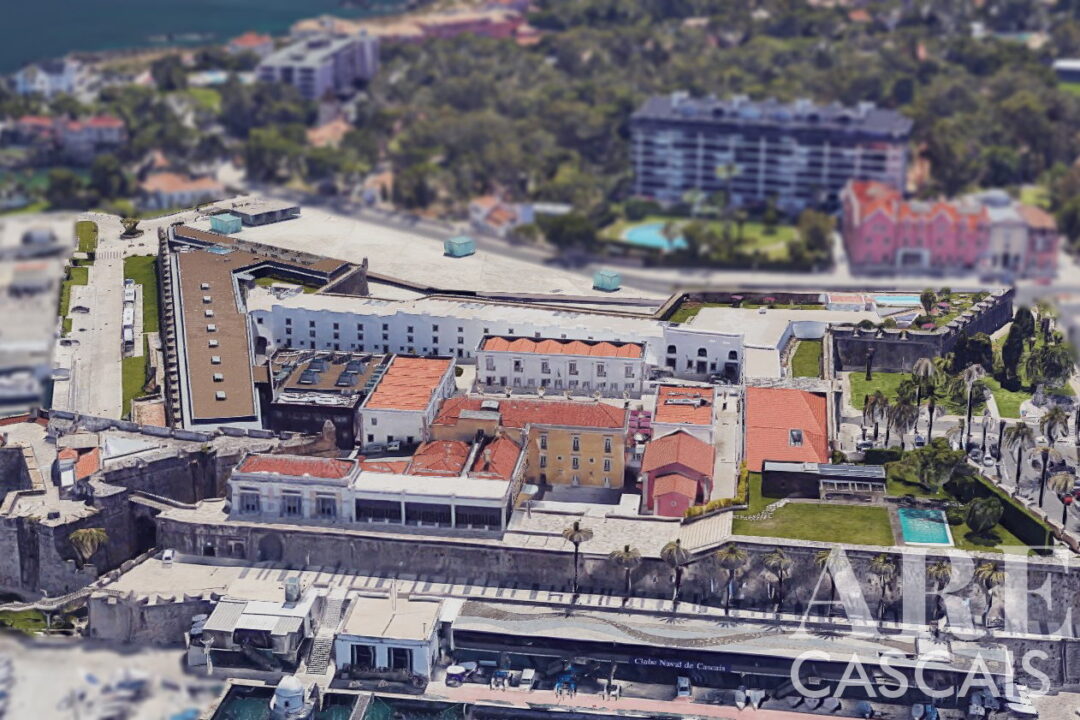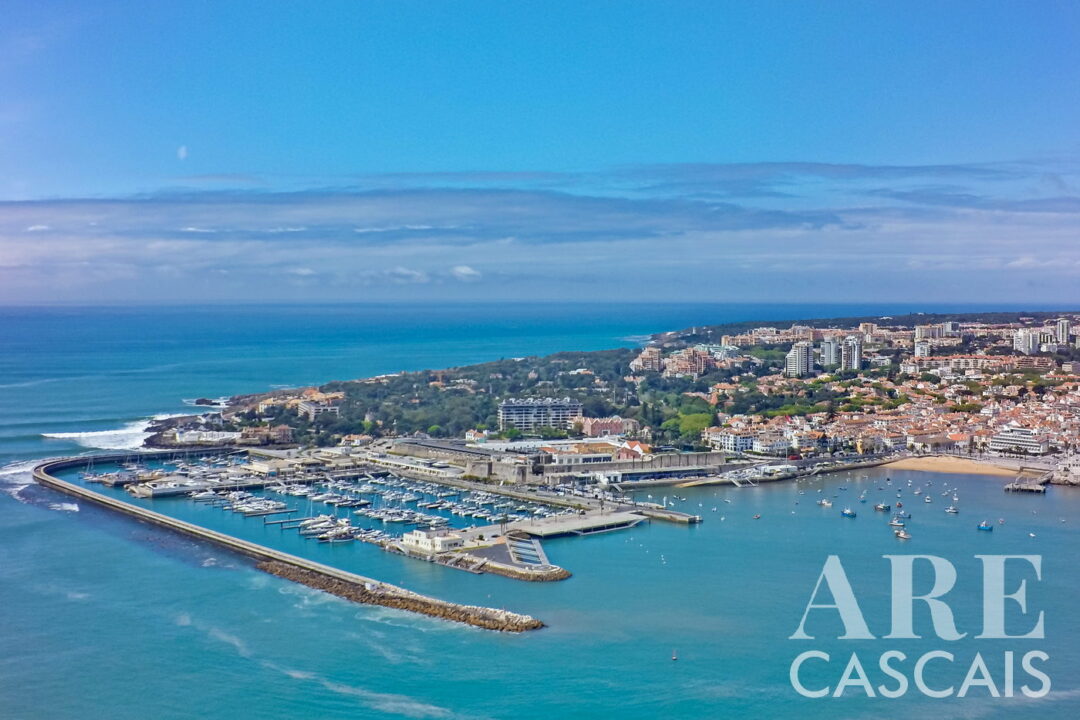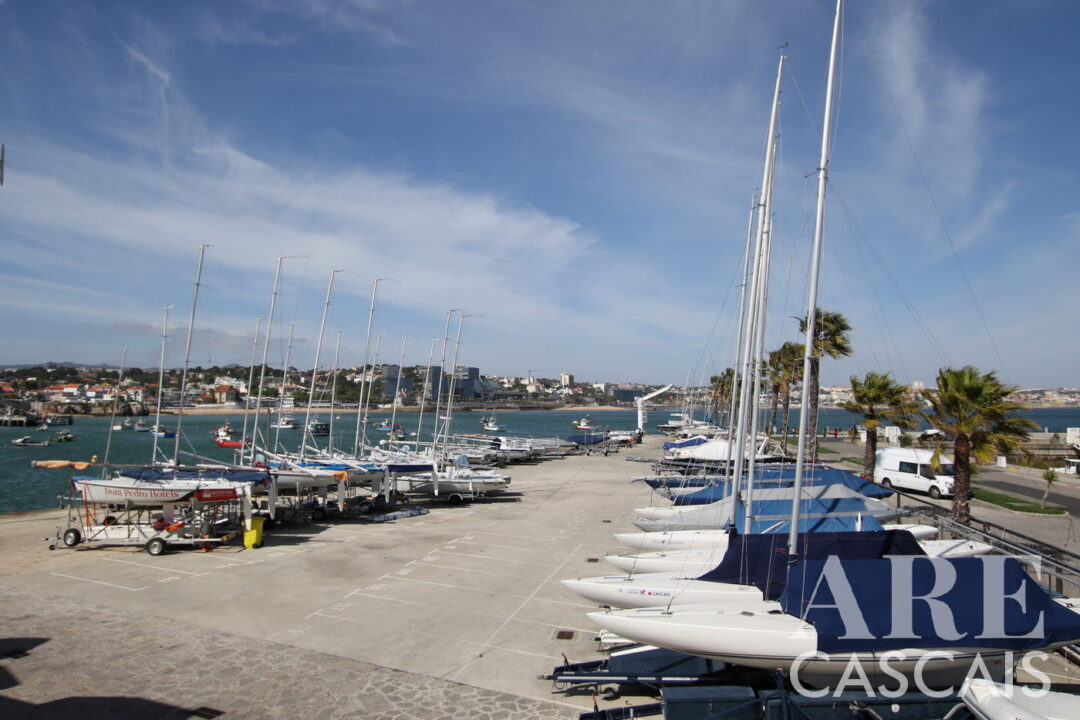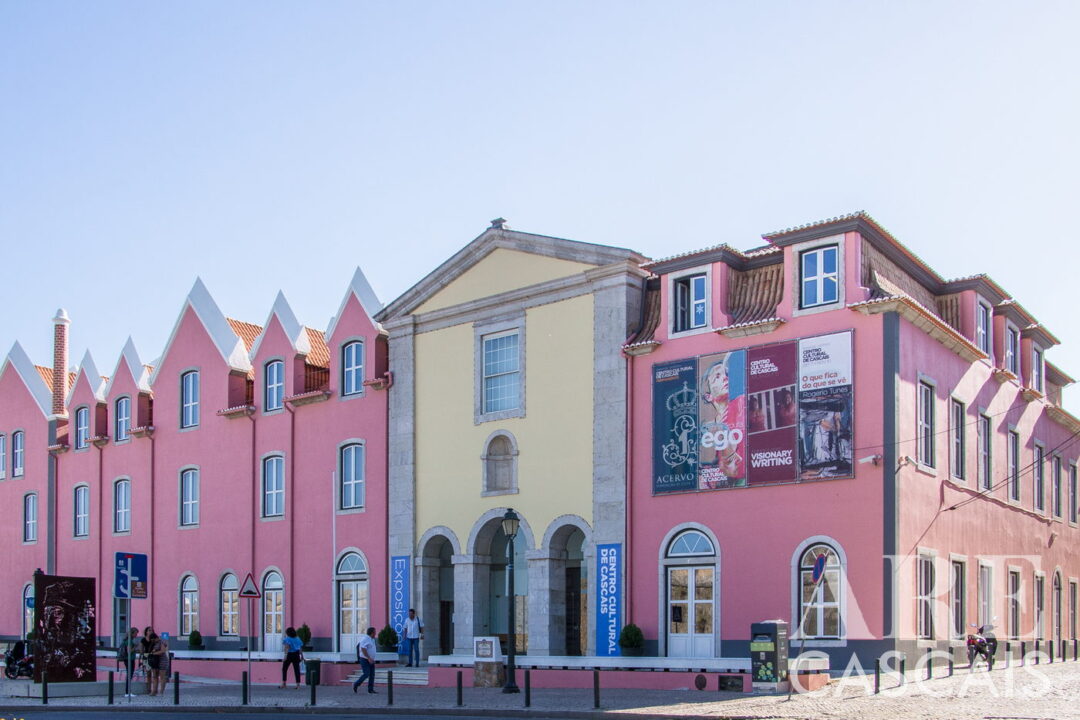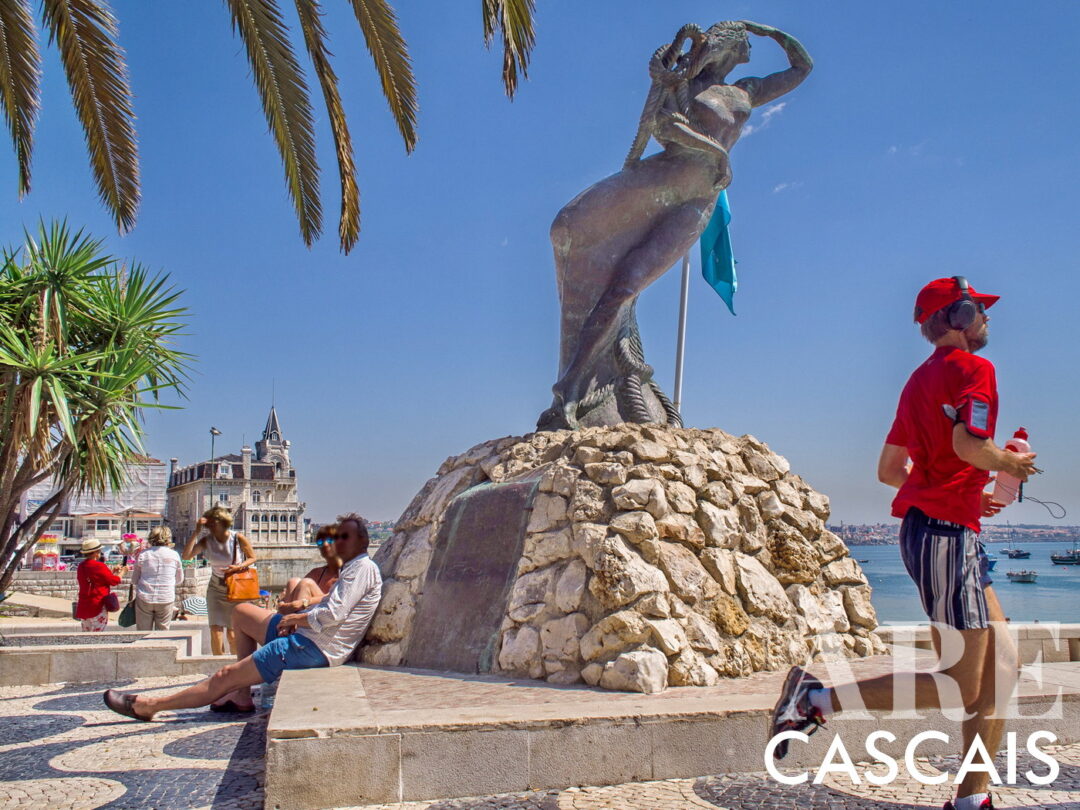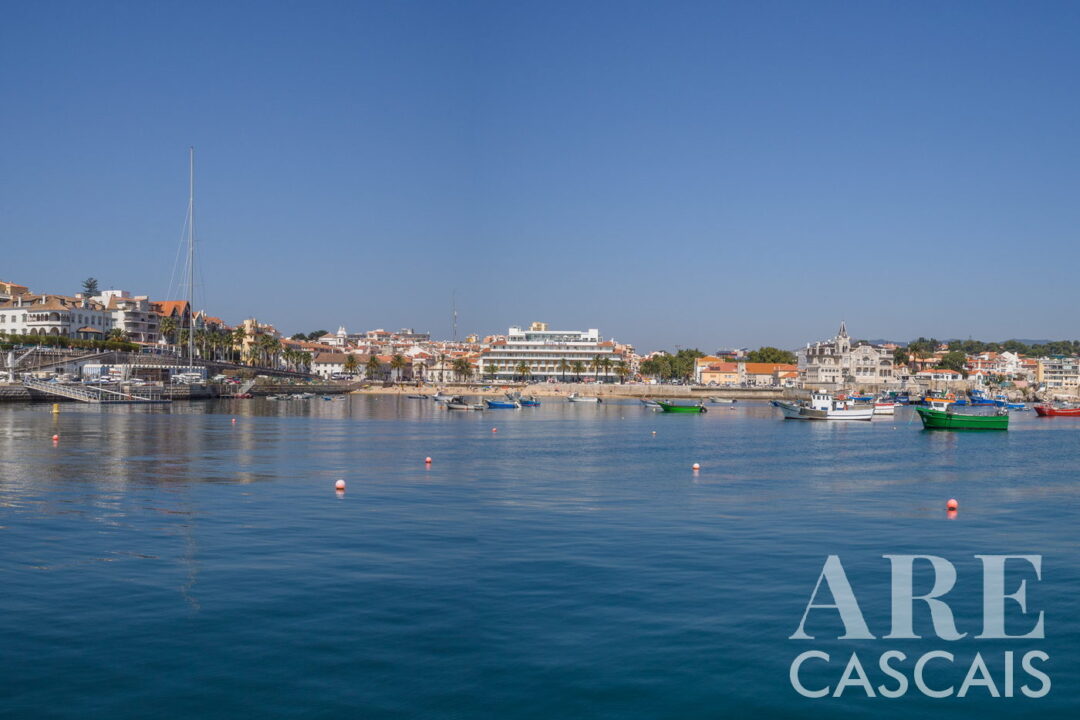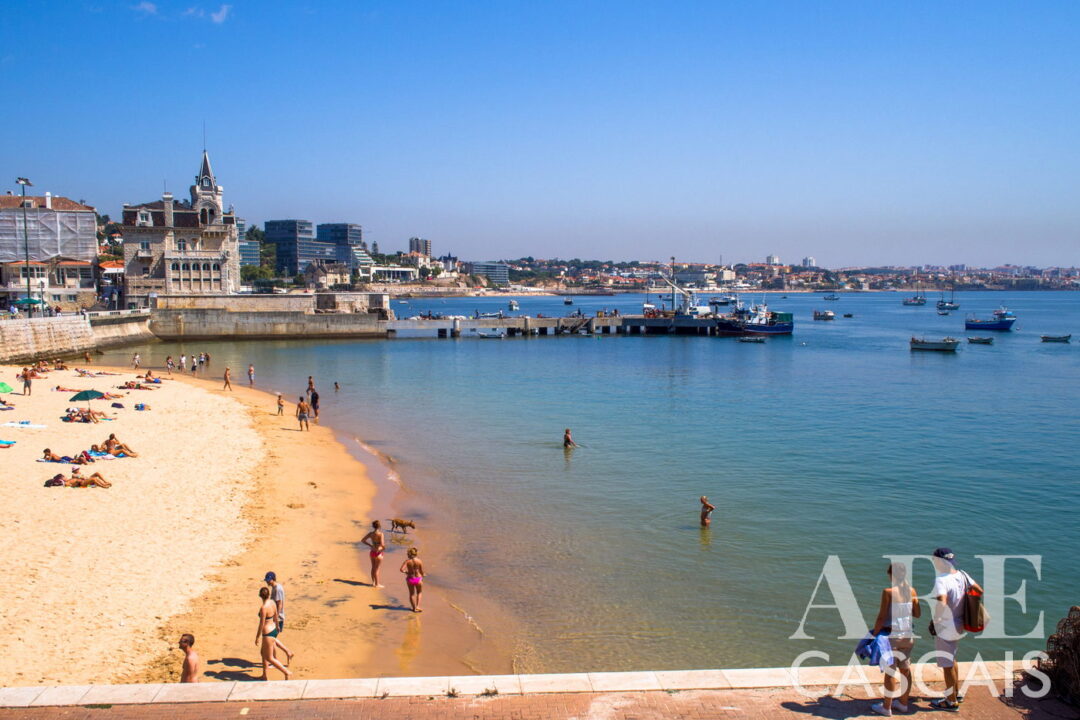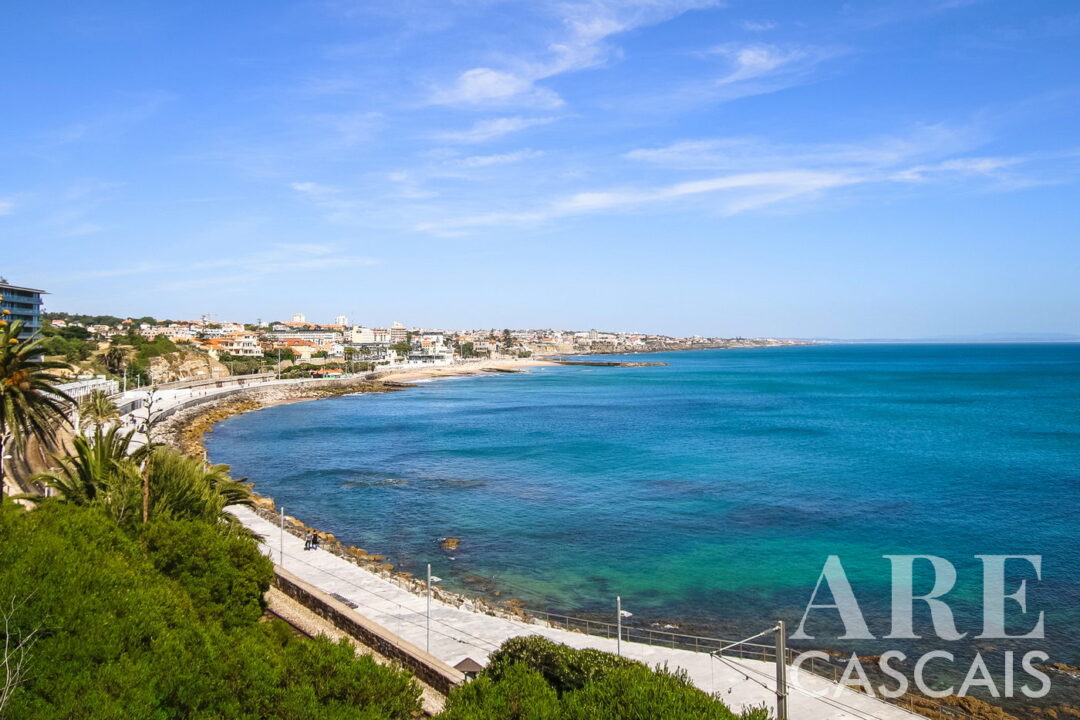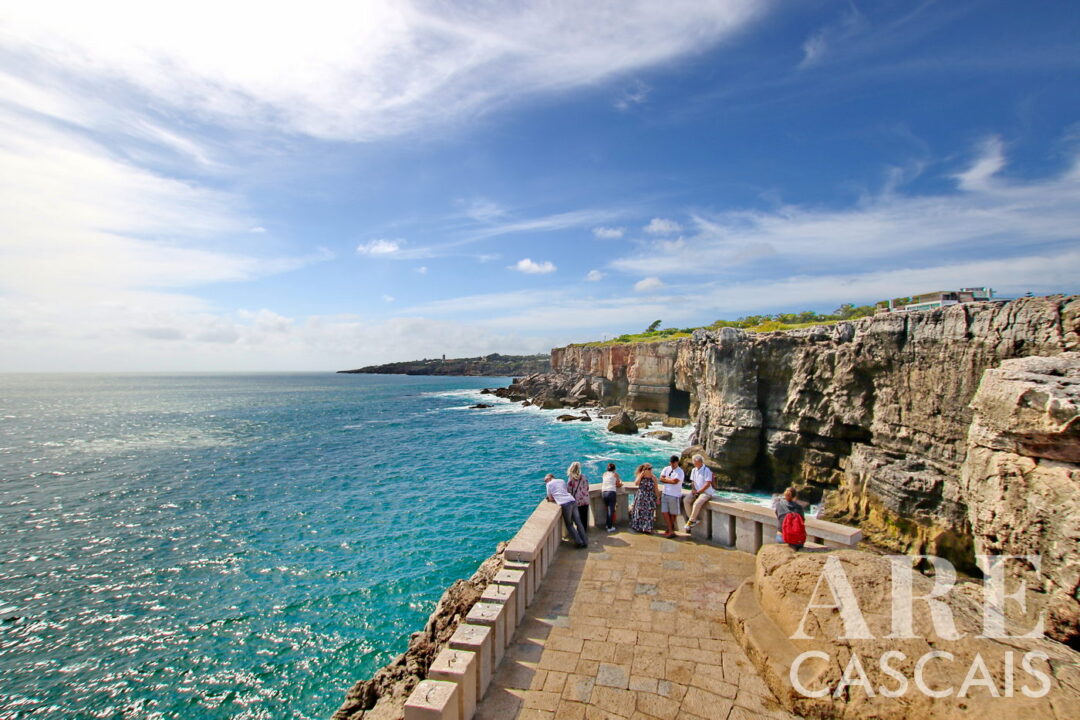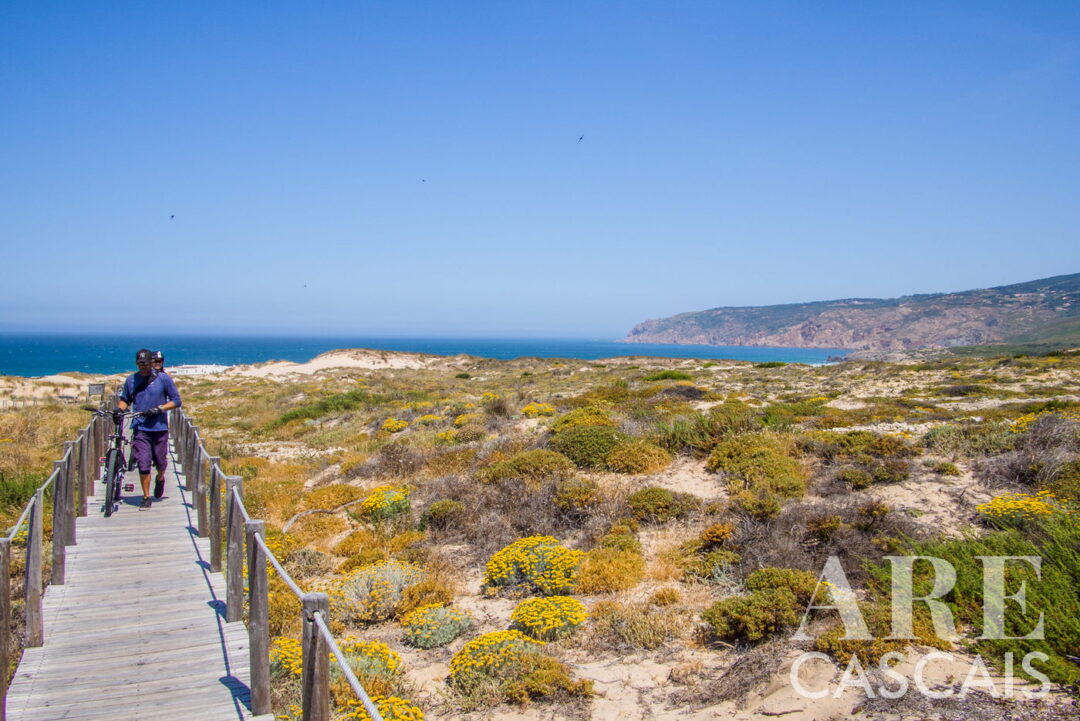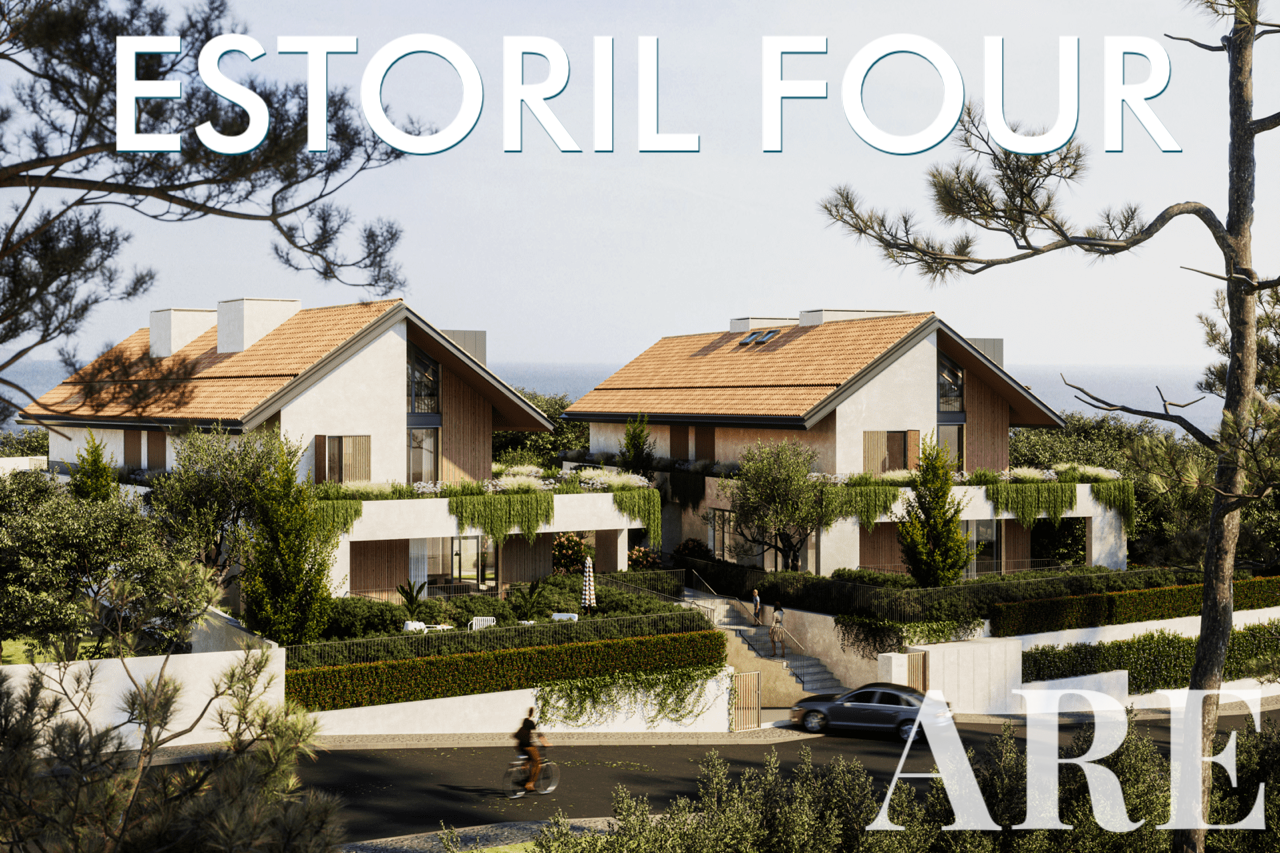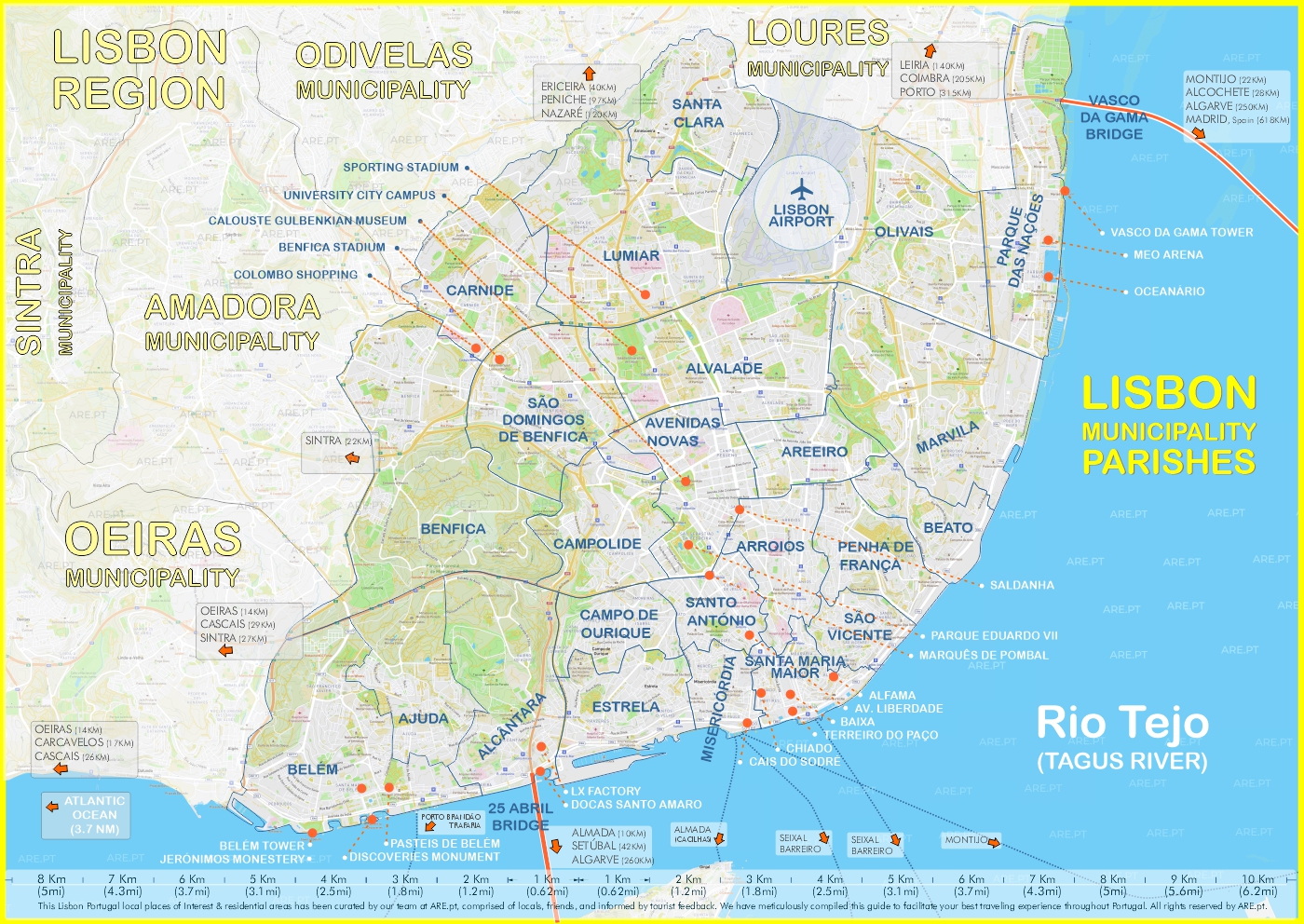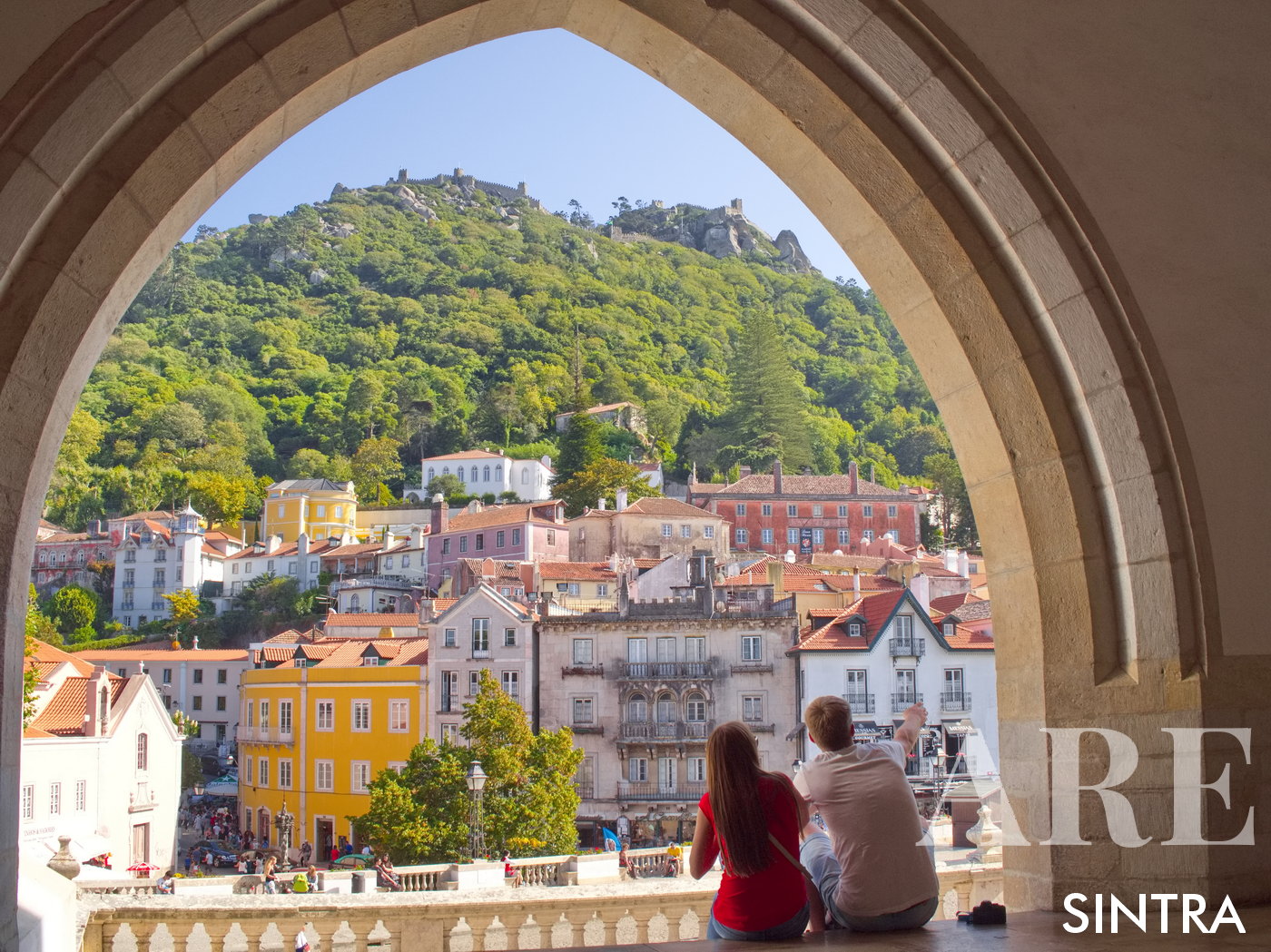Cascais, the Portuguese Riviera
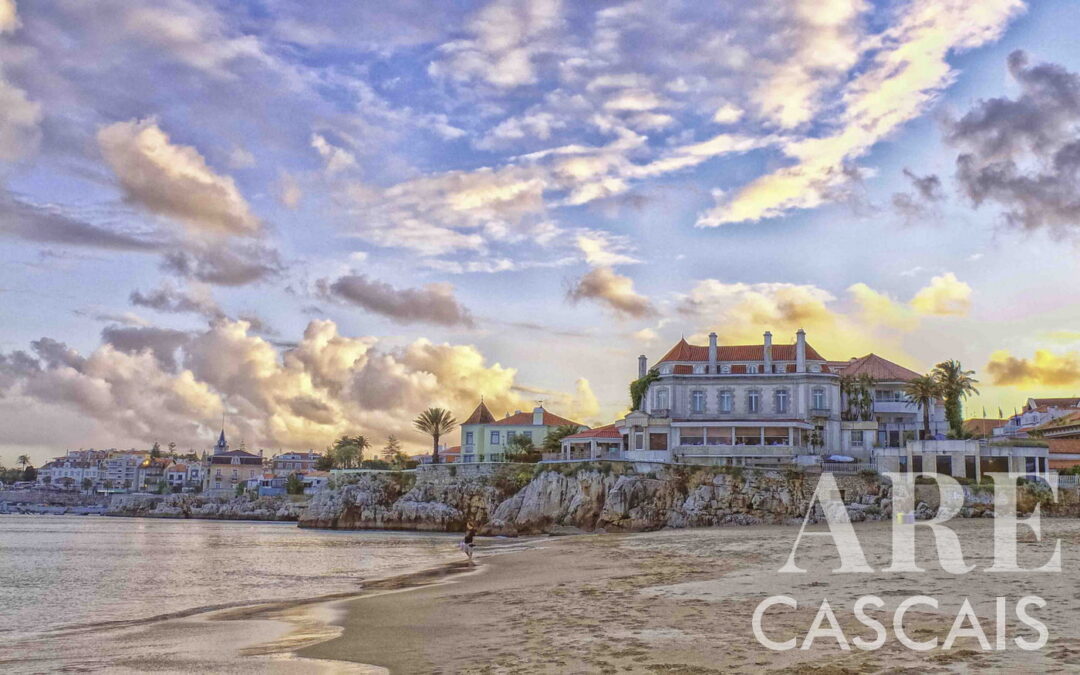
Cascais is a town and municipality that boasts numerous attractions, making it one of the most recognized places in Portugal, one of the most pleasant to live in, and certainly one of the most desirable for investment
Cascais, often referred to as the Portuguese Riviera, is a renowned coastal village located along the Atlantic Ocean, 30 minutes from the portuguese capital city of Lisbon, harboring approximately 210,000 inhabitants. Historically a haven for the Portuguese elite, it has evolved to accommodate a diverse mix of residents, including many affluent international expatriates, who have chosen to make it their home. This blend of upper-class inhabitants and the town’s coastal charm, marina, and historical richness have resulted in Cascais having a higher living standard compared to Lisbon. The town has not only continued to attract the well-to-do but has also developed a cosmopolitan ambiance through its plethora of offerings, making it a vibrant and sought-after place to reside.
Living in Cascais
- Properties for sale in Cascais – View the properties page with homes, apartments and land plots for sale in Cascais
- Residential condominiums in Cascais – View the Developments page with all the residential developments in Cascais
- Floratta
- Hilton Cascais Residences
- Elayne Residences Cascais
- Nine One
- Plátanos
- Sandwoods
- Essence
- Varandas da Torre
- The Park – Cascais Residences
- AVILEZ 104
- Quinta das Marianas
- Galardi
- São João Residences
- Estoril Terraces
- ToLive Cascais
- Dom Henrique Villas
- Alto Estoril
- Urban Living
- L’Ensemble
- SOLO
- Bayview Cascais Bay
- Golf Residences
- AZO Cascais
- Green Plaza
- Blue Villas
- i5 Estoril
- Parque Atlântico
Experiencing life in Cascais offers a wholly distinct perspective of the village. To truly feel like a resident, it is essential to integrate oneself with the locale and its lifestyle. While short stays can easily be accommodated by any of the village’s premier hotels, establishing Cascais as your home involves a much more significant decision. We recommend that you explore the diverse residential areas and determine which best aligns with your lifestyle. Some areas offer tranquility, some are more central, while others provide a balance of both worlds. Ultimately, the decision comes down to a key question: What are you willing to invest to choose your ideal location?
Residential Areas within Cascais:
- Cascais Centre
- Cascais Coastline between Cascais Centre and Estoril
- Quinta da Marinha is Cascais’ most exclusive neighborhood, known for its luxury supervillas, renowned golf courses, and world-class hotels. Surrounded by pine trees and ocean sounds, it offers an equestrian center, health clubs, and fine dining.
- Birre
- Abuxarda
Where is Cascais located inside Portugal?
Where is Cascais located?
Cascais is strategically located in the center west of Portugal, boasting superb connectivity to Lisbon. Traveling from Cascais to Lisbon’s central hub, Av. da Liberdade, or to Lisbon Airport takes approximately 33 minutes, traversing a distance of 30 km via the A5 highway. For those preferring a more picturesque journey, the Marginal ocean drive offers a scenic route, allowing travelers to reach Belem, the gateway to Lisbon, in around 35 minutes, over a distance of 22 km.
Sintra proximity to Cascais
Sintra, known for its captivating charm, is also readily reachable from Cascais. Opting for the A16 highway, one can arrive in Sintra in about 23 minutes, spanning 17 km. An alternative route through the Parque Natural Sintra-Cascais on the N247 Atlantic coastal road offers a scenic journey of approximately 40 minutes, covering a distance of 30 km.
Cascais is central in Portugal
Cascais also serves as a convenient starting point for longer road journeys to other major cities in Portugal. For instance, a drive from Cascais to the vibrant northern city of Porto takes about 3 hours and 19 minutes, covering a distance of 343 km via the A1 highway. On the other hand, heading south from Cascais to Faro, the capital of the Algarve region, takes approximately 3 hours, spanning 305 km via the A2 highway. Both routes offer efficient and direct access to these key Portuguese cities, making Cascais a favorable location for broader exploration.
Travel to Portugal, get to Cascais
Traveling to Cascais is quite straightforward, with Portugal’s major airports in Lisbon, Porto, and Faro serving as primary gateways. If you’re landing in Lisbon, a short drive will bring you to Cascais in approximately 36 minutes, covering a distance of 35 km via the highway. For those arriving from Porto, it’s a drive of about 3 hours and 16 minutes, spanning 342 km via the A1 highway, and from Faro, it’s roughly 2 hours and 59 minutes, with a distance of 301 km via the A2 highway. Once in Lisbon, Cascais is a mere 28-minute drive away, covering 27 km via the A5 highway. These well-connected routes make Cascais easily accessible, whether you’re arriving from within Europe or another continent.
What to do in Cascais year round
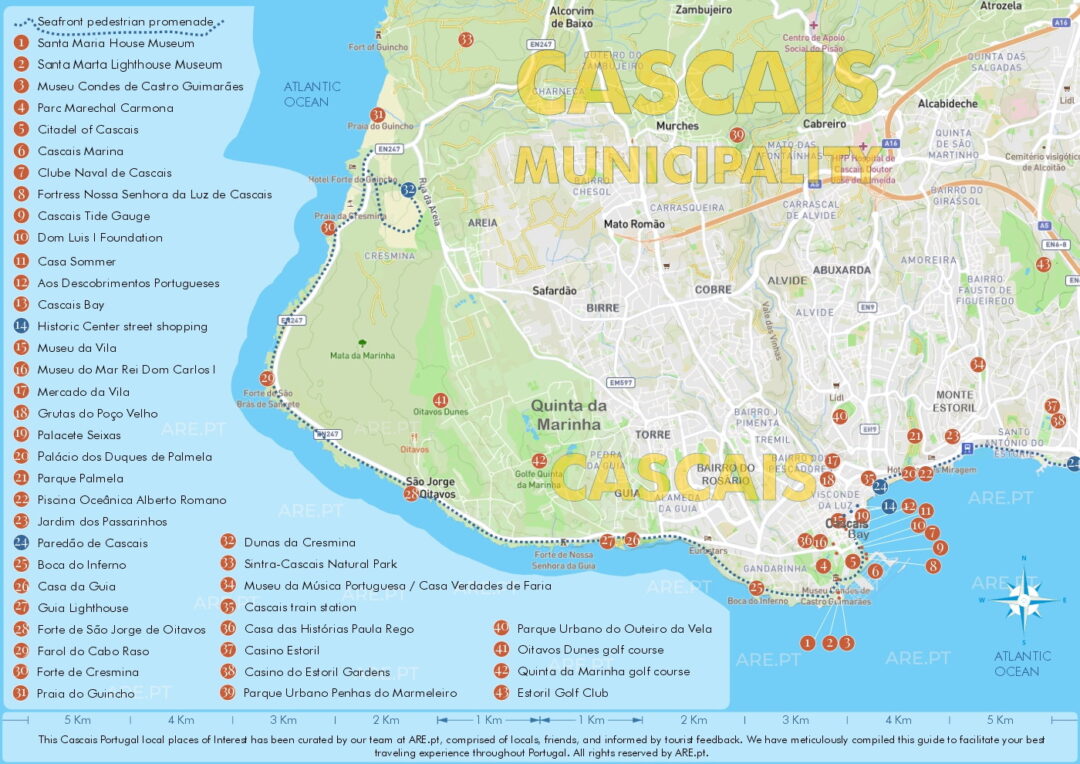
Map of Cascais with the main residential neighborhoods, some points of interest, and seafront promenades
Cascais unique activities
In Cascais, a myriad of year-round activities awaits you, thanks to its historical status as a refuge for the wealthy and its consistently favorable weather. Indulge in the area’s rich history and vibrant lifestyle by attending glamorous parties along the Portuguese Riviera, stretching from Cascais to Lisbon, through Estoril, Oeiras, Carcavelos, and Belem. Sports enthusiasts can revel in a variety of events, such as the Tennis Estoril Open, motorsports at Estoril Racetrack, golf championships, world sailing regattas, and horse riding events.
Stay Active in Cascais
For surf aficionados, the proximity to world-class surfing beaches like Carcavelos, Guincho, Sintra Praia Grande, Ericeira, Peniche, and the giant waves of Nazaré is a dream come true. Explore the Serra de Cascais Sintra by bike, embark on scenic walking trails, visit monuments, and enjoy leisurely drives along picturesque roads. Savor the culinary delights of the region, with numerous fine dining establishments gaining worldwide recognition. Shopping for luxury brands on Av. da Liberdade, just 30 minutes away, renowned for its high-end boutiques and exclusive selections. The village center and marina are buzzing hubs for those looking to immerse themselves in local life, while the nearby Casino do Estoril and theaters offer entertainment aplenty. The close
proximity to Lisbon further broadens your options, ensuring a fulfilling and varied experience. Whether it’s sailing, golfing, playing tennis, horse riding, or simply enjoying sunny lunches on the esplanades, Cascais offers a diverse and lively outdoor lifestyle throughout the year.
Visit Cascais attractions
Starting a visit from the bay in Cascais, one will encounter numerous things to do in Cascais along the path, primarily located along the coast, showcasing the area’s rich historical and natural heritage
Coastal walk from Cascais Bay to Paredão de Cascais
Visiting the coastal walk from Cascais Bay to Paredao de Cascais offers a unique opportunity to explore a variety of attractions in Cascais, predominantly situated along the beautiful coastline. This picturesque path, constructed in the 1950s, reveals a wealth of historical and natural wonders, creating a diverse experience for visitors. Starting from Cascais Bay and heading east, it stretches through a scenic promenade by the waterfront to Estoril. This popular route encapsulates the essence of Cascais, presenting a harmonious blend of history, nature, and stunning seascapes, making it a highly appreciated and frequently visited location by both locals and tourists.
1. Santa Maria House Museum: The Casa de Santa Maria, situated in the Santa Marta cove beside the lighthouse in Cascais, is a historic ocean-side villa designed by the renowned architect Raul Lino in 1902. Commissioned by Jorge O’Neill, an aristocrat of Irish descent, the villa brilliantly fuses Mediterranean design with Moorish influences, evident in its distinct horseshoe arches and intricate tiles. Acquired by the Cascais Municipality in 2004, this National Heritage Site, classified as a Monument of Public Interest in 2012, now serves as a museum. We can admire its 17th-century painted tiles, oil-painted wooden ceiling, and other architectural gems. Although now devoid of its original furniture, the house offers access to a terrace with stunning views. Over its storied past, the villa has welcomed luminaries such as the Grand Duchess Charlotte of Luxembourg and King Umberto II of Italy. Beyond its rich history, today’s Casa de Santa Maria plays host to various cultural events, including workshops, conferences, and exhibitions. The magnificent tile panels within the house are especially noteworthy.
2. Santa Marta Lighthouse Museum: The Santa Marta Lighthouse Museum, originally part of the Santa Marta Fort complex, is a historical landmark situated in Cascais, Portugal. The museum meticulously depicts the building’s history and the technological advancements that have occurred over the years, providing insight into the daily lives and routines of former lighthouse keepers. The exhibition allows visitors to delve into the maritime history and architectural heritage of the region. Adding to the rich experience, the museum’s shop offers a variety of publications, documents, and objects themed around lighthouses, marine life, architecture, and the local area of Cascais. Visitors can climb the lighthouse via a narrow stairwell to reach the top, where they are treated to stunning views overlooking Cascais—making it a great spot for photography. The venue also features a small museum at the entrance, further detailing the history of the lighthouse.
3. Museu Condes de Castro Guimarães: The Museu Condes de Castro Guimarães, located in Cascais, is a distinctive fine art museum housed in a historic building that bears resemblance to a small castle, both externally and internally. Established in the former Torre de S. Sebastião, built between 1897 and 1900, the museum is set within the scenic Parque Marechal Carmona, near the historic Ermida de S. Sebastião. The museum showcases a unique mix of architectural styles and features a variety of rooms including a library, music room, tea room, arms room, private apartments, and a small art gallery, each offering a glimpse into the rich history and cultural heritage of the region. The museum’s collection comprises an impressive array of antiquities and artworks. We can explore the grand interiors, climb the easily accessible tower for views, and enjoy the surrounding landscape where the sea reaches the palace facade at high tide. Inaugurated in 1931, thanks to the bequest of Manuel Inácio de Castro Guimarães, the museum stands as an affordable and captivating destination, blending architecture, history, and art.
4. Parc Marechal Carmona: Parc Marechal Carmona in Cascais is a charming park situated near the city center and marina, offering us a delightful blend of nature and recreation. The park features an array of wildlife, including ducks, turtles, peacocks, chickens, and roosters, making it particularly enjoyable for children. With its beautifully maintained gardens, a variety of fragrant flowering trees and plants, and walking paths, the park provides a serene environment for relaxation. The park’s proximity to the heart of Cascais makes it an ideal spot for a relaxing picnic or a leisurely stroll.
04-cascais-marechal-carmona-park-cascais-portugal-1080×720.jpg
5. Citadel of Cascais: Elegant royal residence with bay views. Type Bastion fort. The Citadel of Cascais is a set of fortifications built between the 15th and 17th centuries to defend the Cascais coastline and River Tagus estuary and to protect against attacks on the capital of Portugal, Lisbon. The citadel incorporates three separate developments, the tower of Santo António de Cascais, the Fortress of Our Lady of Light (Nossa Senhora da Luz de Cascais), and the former Royal Palace area. The first construction of a fort on the site was between 1410 and 1415. Improvements to this were deemed necessary as the Cascais Bay was constantly threatened by the English. In 1488 a medieval-style tower at the tip of the Point of Salmodo, to the southwest of the Bay, was begun under the orders of King John II of Portugal. The fort, known as the Torre de Santo António de Cascais, was designed to share, with artillery ships and two other fortresses, resistance to possible military attack on Lisbon. The other forts were the Belém Tower and the Fort of São Sebastião de Caparica, which are approximately opposite each other on the River Tagus closer to Lisbon. In the nineteenth century, King Luís I of Portugal ordered the adaptation of the citadel to become a place of rest and retreat for the royal family and nobility and the royal palace area (now a museum) was constructed.[2] Until the regicide of King Carlos I in 1908, the royal family spent the months of September and October in Cascais. In 1878 the complex was equipped with the first electric lights in Portugal. Through a Decree in 1977, the complex was classified as Property of Public Interest. Since then it has been restored and incorporated into the modern design of the surrounding areas, providing an impressive backdrop for the new Cascais Marina. A hotel has been built into the Citadel buildings, which also now house an Arts Centre (Cidadela Arts District). Some art galleries inside this old fort. Also a fancy hotel and a restaurant.
6. Cascais Marina: Cascais Marina, situated close to Lisbon, is a hub of nautical excellence with a capacity for 650 vessels ranging from 6 to 45 meters. Recognized globally for hosting prestigious events like the America’s Cup World Series and the ISAF World Sailing Championship, it has become a magnet for not just sailors but also European royalty passionate about the sea, including figures like King Juan Carlos I of Spain. Historically, Cascais, with its cosmopolitan vibe, has a deep-rooted connection to the sea, emphasized by King D. Carlos I, an esteemed oceanographer, who established one of the world’s prime oceanographic laboratories here. Cascais Marina isn’t just anchored in history; it’s forward-looking, championing environmental sustainability and cutting-edge technology. Its favorable sailing conditions, enhanced by reliable wind patterns and vantage points for spectators, have solidified its international reputation, especially with the America’s Cup choosing it for their World Series. Beyond its sailing prestige, the marina offers an array of restaurants and shops, accompanied by views of magnificent yachts and the expansive lagoon. It promises a blend of luxury, history, and natural beauty, making it a must-visit in Cascais, whether for dining, shopping, or simply soaking in the maritime atmosphere.
7. Clube Naval de Cascais: The Clube Naval de Cascais, established in 1938, stands as one of Portugal’s most prestigious sailing clubs with global recognition. The club frequently hosts international events, enhancing its reputation in the maritime world. An integral part of the club is the Mirpuri Foundation Sailing School, offering sailing courses suitable for individuals ranging from 6 years old to adults, including windsurfing lessons. The club boasts a diverse membership with various boat classes
8. Fortress Nossa Senhora da Luz de Cascais: The Fortaleza Nossa Senhora da Luz and Torre de Santo António are prime historical landmarks in Cascais, located strategically overlooking the marina and Cascais bay. Together, they offer a panoramic view that stretches out to the horizon of the ocean. These structures serve as a testament to Cascais’s rich architectural and historical heritage. The fort, in particular, stands shoulder to shoulder in historical significance with the renowned towers of Belém and da Caparica. Dating back to 1488, the Torre de Santo António was an essential part of the Cidadela’s defenses, commissioned by D. João II. Inside the fort, visitors can explore a central courtyard, original tower, artillery placements, barracks, and a water cistern, all echoing Portugal’s storied past. After being inaccessible for years, these architectural treasures are now open, offering a tangible experience of Portuguese history.
9. Cascais Tide Gauge: The Cascais tide gauge, established in 1882, is Portugal’s inaugural sea-level recorder. Located at the entrance to the Bay of Cascais, this historically significant instrument was among the first of its kind globally. Built in Paris by acclaimed clockmakers, its analog system has been recording sea levels for over a century, revealing an average annual sea-level rise of 1.3 mm. Its uninterrupted operation since 1895 makes it one of the oldest active gauges. Modern upgrades complement its original mechanism, and while it serves crucial scientific purposes, it stands as a testament to Portugal’s maritime history and technological ingenuity. You can experience this blend of history and science firsthand by arranging a visit.
10. Dom Luis I Foundation: The Dom Luis I Foundation in Cascais is a renowned Cultural Center, showcasing a diverse range of modern art, from paintings to sculptures and figurines. Many of these pieces have been generously donated by artists, providing an authentic glimpse into contemporary artistic visions. Beyond its permanent collection, the center hosts rotating exhibitions from global artists and serves as a vibrant venue for concerts and cultural events, making it a must-visit for art enthusiasts.
11. Casa Sommer: Casa Sommer is a museum located slightly away from the bustling heart of Cascais. Housed in a subtly elegant building, the museum is dedicated to portraying the cultural, archaeological, and historical narratives of the city. Its primary highlight is the work of a renowned photographer whose images played a pivotal role in popularizing Cascais. Here, visitors can immerse themselves in captivating old photographs, explore the significant figures in Cascais’s history, grasp the city’s political evolution, and observe the transformation of the city through comparative maps from various decades. Casa Sommer provides a comprehensive insight into the rich tapestry of Cascais’s past.
12. Aos Descobrimentos Portugueses: The “Sculpture aos Descobrimentos Portugueses” in Cascais Dom Luís Primeiro sidewalk, commemorates Portugal’s Age of Discoveries. Located in the heart of Cascais Bay, it celebrates the nation’s maritime history and the navigators who explored unknown territories.
13. Cascais Bay: In Cascais Bay we find a southerly view over the beach and bay of Cascais, with the boats anchored, the marina in the background, the nautical club to the west, and the Citadel Walls. To the East we have the Pontão da Praia da Ribeira, the Palácio Seixas, and behind the Historic Center, which extends along two main streets with Portuguese cobblestones, with the Cascais town hall, streets of restaurants and street shops, with some more exclusives in street office at the end. On the east side there is a continuation of the coastal promenade with more shops and restaurants, up to the Palácio dos Duques de Palmela and the Alberto Romano ocean pool. From here we enter the Cascais Wall, where we can walk to… Estoril, Carcavelos, Paço de Arcos, Dafundo, Algés, Belém, … and Lisbon
14. Historic Center street shopping: The historic center of Cascais is easily accessible and charming. Along the main road that leads to Cascais bay, you’ll encounter a variety of restaurants. Adjacently, a pedestrian-only street, laid with traditional “calçada portuguesa,” is lined with diverse shops. The prevalent two-story buildings contribute to its unique ambiance. Beyond the local stores, there are also upscale boutiques showcasing branded items. Located near the beach, this area exudes a blend of relaxed coastal charm and urban vibrancy. The historic core extends eastward towards the coast and north to “rua Amarela.” This quaint pedestrian lane is enhanced by vibrant street art and offers an abundance of restaurants and eateries. It’s a bustling spot, characterized by several bars with street-side seating, creating a welcoming atmosphere.
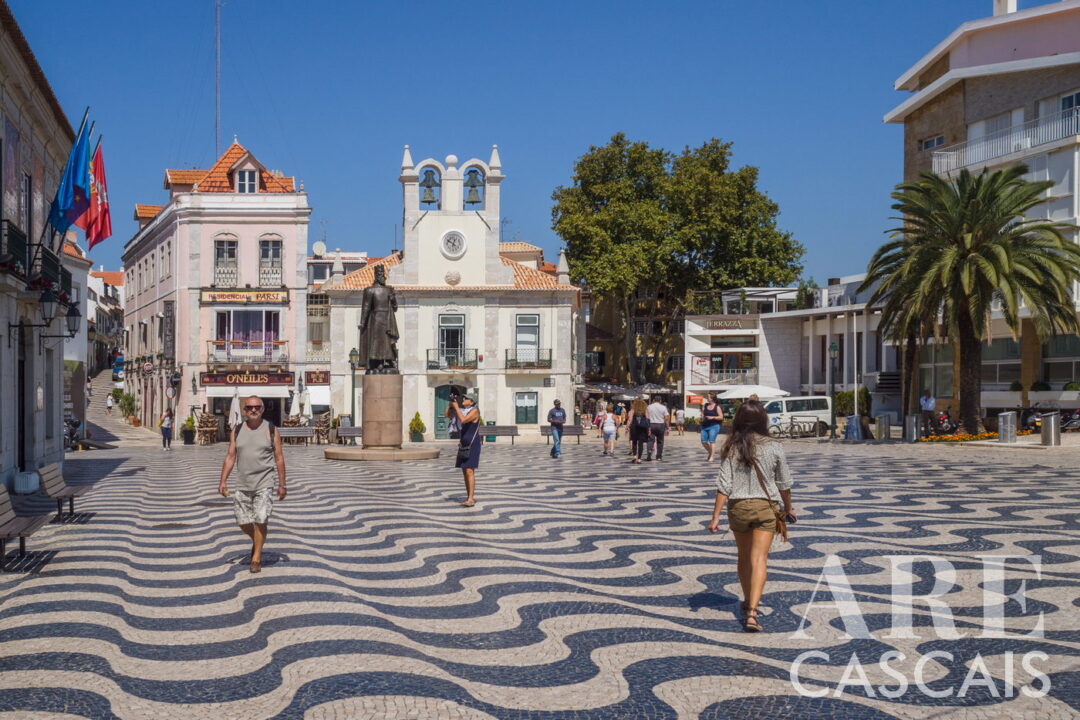
Praça 5 de Outubro in Cascais, access on the left to Rua Amarela, and on the right to the shopping street
15. Museu da Vila: Located in the Paços do Concelho building, the Museu da Vila is the ideal starting point for anyone keen to immerse themselves in the history of Cascais. With a fresh and expanded exhibition space, this museum provides an interactive experience for its visitors and offers free admission. King D. Carlos introduces guests to the museum, which showcases pivotal moments from Cascais’ evolution, transitioning from a simple fishing village to its modern cosmopolitan stature. The museum’s multimedia offerings enrich the experience, enabling visitors to tune into period-specific music and delve into historical accounts, spanning influential figures and significant events that shaped Cascais. The museum also boasts a historic store, a restored mid-20th-century grocery shop. Visitors of all ages will appreciate its interactive elements, such as the photo screen that merges you with old images of Cascais and the immersive 360° video room. With its captivating and well-presented content, many find themselves wanting to revisit this testament to Cascais’s rich history.
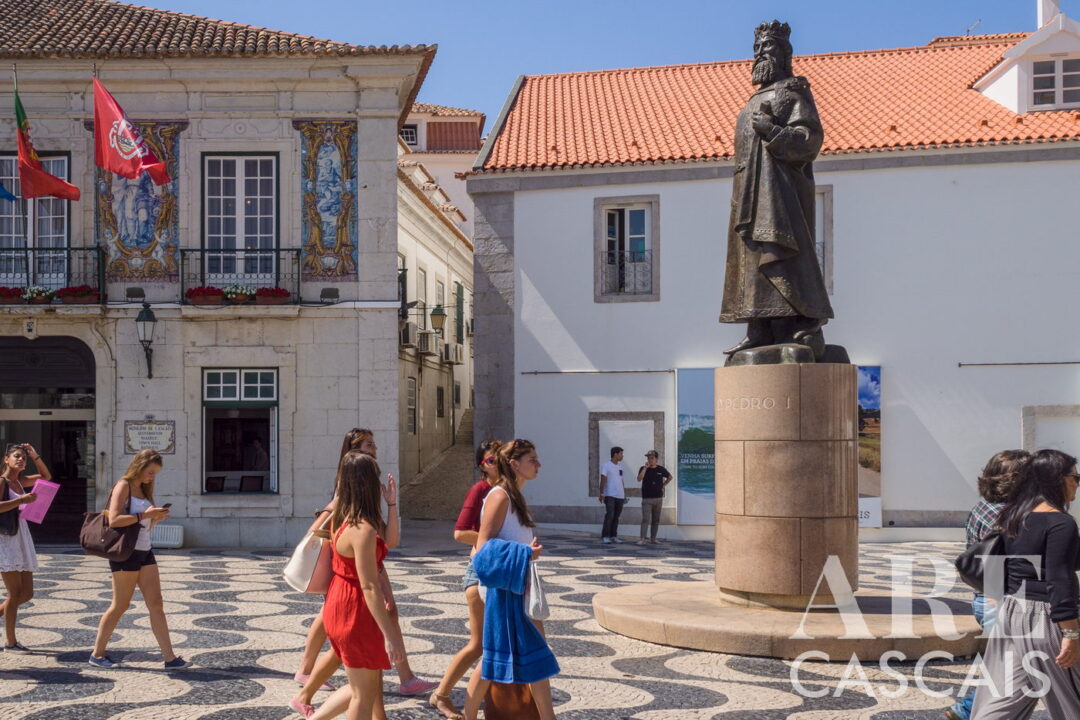
Dom Pedro I statue on the 5th of October Square in front of the entrance to the Village Museum in Cascais
16. Museu do Mar Rei Dom Carlos I: The Museu do Mar Rei Dom Carlos I in Cascais is a must-visit for those interested in marine life and maritime history. Its exhibits highlight the town’s maritime heritage, displaying artifacts like costumes, tools, nets, and boats. A significant focus is given to King Carlos’s intensive research into marine biology. The museum sheds light on various oceanic topics, such as relics from local shipwrecks and the broader scientific exploration of the seas. Located in the former building of the Cascais sport club, established in 1879 by Crown Prince D. Carlos, the museum came into being in 1992. This decision by the Cascais City Hall to utilize the transferred facilities for such a purpose has since provided visitors a deeper understanding of the region’s maritime significance. Furthermore, its renaming in 1997 to Museu do Mar do Rei Dom Carlos pays tribute to a king whose passion for the ocean not only shaped his personal pursuits but also bolstered Cascais’s renown both nationally and internationally.
17. Mercado da Vila: Located near the center of Cascais, this expansive market boasts a vast selection of fresh local produce, making it a bustling hub for both tourists and locals. We find the atmosphere vibrant, with the added allure of little coffee shops, bakeries, and numerous restaurants and bars. Convenient parking, though paid, complements the market’s proximity to other attractions – all within a walkable distance in Cascais’s delightful weather. The market’s covered section houses many retailers, offering unique handcrafted items We can also enjoy diverse goods ranging from arts and crafts to fresh produce, and on special occasions, entertainment enhances our experience in the restaurant areas. There’s also some organic stores and cafes at the back, where fresh vegan baked goods are a treat.
18. Grutas do Poço Velho: Grutas do Poço Velho offers a rare opportunity to step directly into history. By exploring this cave system, visitors are gifted a tactile connection to the Upper Paleolithic era, a time when early humans roamed and sought shelter in such spaces. Beyond its historical significance, the cave’s natural beauty and mystery make it a compelling destination. The intimate group size ensures a personal and immersive experience, allowing individuals to genuinely appreciate the cavern’s nuances and ambiance. Moreover, with artifacts discovered here now housed in the Museum of Cascais, the cave visit complements a broader understanding of the region’s archaeological significance.
19. Palacete Seixas: Palacete Seixas, positioned in central coastal Cascais, is a majestic palace with a rich history. This beachfront mansion boasts a stunning façade and a location that sees it stretching into the sea. We you wander the promenade, its captivating beauty, both from the beachside and the main façade, becomes evident. Historically, it served as a meeting point for marine officials. Situated between the renowned Citadel of Cascais and the marina, this palace is a testament to Cascais’ architectural and historical legacy.
20. Palácio dos Duques de Palmela: Palácio dos Duques de Palmela in Cascais stands as a brilliant example of Portugal’s rich architectural heritage. Designed by renowned architects from the 1870s onward, this palace is a masterpiece of combined design eras, capturing the essence of the 17th century and later periods in one monumental structure. Each detail, from the intricate stone façade to the distinct moldings, reflects the meticulous craftsmanship and artistry of its time. Beyond the palace’s architectural allure, the surrounding Parque Palmela offers a serene escape.
21. Parque Palmela: Parque de Palmela is a charming park situated at the gateway to Cascais. Overlooking the ocean, this serene space features a playground designed for children, complete with climbing obstacles. For those seeking refreshment or a moment to relax, there’s also a cafe within the park.
22. Piscina Oceânica Alberto Romano: The Alberto Romano Ocean Pool in Cascais is an innovative attraction, uniquely crafted from the town’s shoreline, offering multiple levels, steps, and enclosed spaces. Benefiting from the high tide which refreshes its water, it promises a pristine swimming experience compared to the bay. Perfectly positioned along the picturesque Cascais-Estoril path, near the iconic Palmela Palace and opposite the former Hotel Estoril-Sol, this pool provides a less congested alternative to the often busy beaches.
23. Jardim dos Passarinhos: Garden and park. It is a very relaxed garden in Monte Estoril, overseeing the Atlantic. Lovely space to sit and enjoy the outdoors. The coffee shop here is also lovely
24. Paredão de Cascais: The Paredão de Cascais is a 2,750-meter seafront promenade connecting Estoril and Cascais, offering expansive sea views and access to several key beaches. Visitors can start their journey at either Praia da Conceição in Cascais or Praia da Azarujinha in São João do Estoril, passing through beaches like Duquesa, Moitas, and Tamariz. Two free oceanic pools, Alberto Romano and Tamariz, are available, with all beaches supervised from May to September. The walkway features benches, shaded spots, drinking fountains, and beachfront cafes. Fitness circuits near Praia da Poça and Praia das Moitas cater to exercise enthusiasts. The promenade’s stone pavement, art-adorned tunnel to Parque Palmela, and distance markers are among its highlights. While there’s designated cycling space, pedestrians are given priority. Access is facilitated by Avenida Marginal, with parking near most beaches
Coastal walk from Cascais Bay to Guincho
Visiting the area between Cascais and Guincho offers a unique opportunity to engage with nature and explore a variety of attractions. The scenic route features a picturesque cycle path with views of the westernmost point of Europe, the striking geological formation of Boca do Inferno, the recently renovated Forte S. Jorge de Oitavos, and the 18th-century Farol da Guia. This combination of natural beauty, historical sites, and outdoor activities makes it a compelling visit for those seeking to experience the diversity and richness of the Cascais region.
25. Boca do Inferno: Boca do Inferno, or “Hell’s Mouth,” situated near Cascais, Portugal, is an awe-inspiring natural chasm carved by the relentless seawater that crashes powerfully against its rocky walls, particularly during winter’s high waves. This geological marvel not only stands as a testament to nature’s artistic hand but also serves as a historic backdrop to one of the first films, “A Sea Cave Near Lisbon” in 1896. A visit promises not just panoramic views ideal for contemplation, picturesque sunsets, and a peek into cinematic heritage, but also a vibrant local experience. You can observe Cascais’s coastline, witness the captivating beauty intensified during high tides or tempestuous seas, relax to the entrancing sound of waves, and watch local fishermen in their element. The locale is also a hub for local artists and expats showcasing their artistry and jewelry. To enhance your visit, there’s a quaint eatery and a shop where you can grab refreshments, ice creams, or souvenirs. The breathtaking blue waters and the unusual cliff formations make this spot a visual treat.
26. Casa da Guia: Casa da Guia is a notable location in Cascais, situated on the cliffs and offering expansive views of the Atlantic Ocean. It is not only a spot for relaxation and dining, with a variety of restaurants and cafes like O Prazer da Carne, but also a shopping destination during the day, hosting an array of boutique shops within its historical structure. The site is well-maintained, featuring sidewalks that allow us to enjoy the ocean views and the sounds of waves, contributing to a serene atmosphere. Located near landmarks like the Guia lighthouse and close to Guincho, it provides a diverse experience for visitors, combining nature, gastronomy, shopping, and history. The preservation of its 19th-century architecture adds to its appeal.

Casa da Guia is a unique space with restaurants, cafes and shops located on a cliff overlooking the Atlantic Ocean…
27. Guia Lighthouse: The Farol da Guia, a 28-meter white octagonal tower, stands as a sentinel beside the Casa da Guia, marking a picturesque spot along the path from Cascais to Guincho. Positioned right next to the sea, this lighthouse offers breathtaking views, and the cliffs below present an excellent opportunity for rock climbing, or perfect sunset.
28. Forte de São Jorge de Oitavos: Forte de São Jorge de Oitavos offers a chance to delve into Portuguese history, as the fort played a significant role in coastal defense during the Portuguese Restoration War. Located in the scenic region of Cascais, Lisbon district, it provides insights into military strategies of the 17th century, featuring original cannons and bartizans. Now a museum, the fort houses permanent and temporary exhibitions, shedding light on the lives of its past inhabitants and its relationship with Cascais.
29. Farol do Cabo Raso: The Farol do Cabo Raso is a notable landmark situated at what is often considered the westernmost point of Europe. Positioned on a cliff, it offers stunning views of the ocean, making it an ideal spot for witnessing the sunset. The lighthouse stands at a height of 13 meters, has a focal height of 36 meters, and has been automated since 1984. Opening its doors in 1894.
30. Forte de Cresmina: Forte de Cresmina offers a glimpse into Portugal’s historical defenses, allowing you to understand the strategic importance of Cascais in maritime protection. Besides its rich history, the fort’s location provides panoramic views of Cresmina beach and the surrounding coastline. Established in 1762, its primary function was to defend the Cresmina beach against potential invasions. However, by 1889, the fort changed hands and became private property.
31. Praia do Guincho: Praia do Guincho, a 15-minute (9 km) drive from Cascais, is a top destination for surfing and windsurfing enthusiasts because of its strong winds and waves. This beach offers a scenic 1h50 walk from Boca do Inferno, covering an 8 km stretch of cycle path and pedestrian promenade; those cycling can cover this in about 26 minutes. It was honored as one of the “Seven Wonders, Beaches of Portugal” in 2012 and has served as a filming location for a James Bond movie. Located in the Sintra-Cascais Natural Park, Guincho’s biodiversity is carefully protected, particularly in areas like the Duna da Cresmina where wooden walkways allow visitors to explore without harming the environment. On the south side of the beach, visitors can find the ruins of the Fort of Guincho. This historical site offers a great place to enjoy the relaxing sound of the ocean and amazing cliff side views. It’s also an ideal spot to witness a breathtaking sunset.
32. Dunas da Cresmina: Visiting Dunas da Cresmina offers the opportunity to explore and learn about the unique ecosystem of the Guincho and Cresmina sand dunes located in the Sintra-Cascais Natural Park. The Visitor Centre serves as the starting point for an educational tour along a dedicated footpath through the dunes, where visitors can observe a variety of native flora and fauna, including the spiny-footed lizard, which relies on the delicate ecological balance of the dunes. Informational panels along the route provide insights into the diverse species inhabiting the area. Cascais has received international recognition for its efforts in protecting this environment, and visitors can enjoy breathtaking views of the dunes, ocean, and mountains while relaxing with a snack or drink at the available facilities.
33. Sintra-Cascais Natural Park: The Parque Natural de Sintra-Cascais, at Europe’s westernmost point, boasts the dramatic cliffs of Cabo da Roca and a variety of geological marvels like fossilized dunes and dinosaur footprints. Along its coast lie pristine beaches, including the windsurfer’s paradise, Guincho. Inland, traditional villages pepper the landscape, characterized by stone-walled fields and unique Colares wine production. The lush Serra de Sintra is central to the park’s character, dotted with historic landmarks like the 16th-century Convento dos Capuchos. The town of Sintra, with its rich architectural heritage, seamlessly integrates nature and history, recognized by UNESCO as a cultural landscape.
Cascais atractions around Cascais
34. Museu da Música Portuguesa / Casa Verdades de Faria: The Museum of Portuguese Music in Estoril is rewarding due to its showcase of Revivalist architecture by Raul Lino and a unique collection of diverse musical instruments assembled by Michel Giacometti, reflecting the rich musical traditions of Portugal. The museum houses a variety of instruments, from guitars and accordions to bagpipes and lamellophones, and pays homage to the commitment of Enrique Mantero Belard, Gertrudes Verdades de Faria, and Fernando Lopes Graça to preserving Portuguese culture. With a documentation center offering extensive resources, a prime location in the picturesque town of Estoril, live performances, and a representation of the region’s artistic and archaeological heritage, the museum offers an enriching and comprehensive experience for those interested in various facets of Portuguese heritage
35. Cascais train station: The train station in Cascais provides a convenient connection to Lisbon – Cais do Sodré, with a journey time of approximately 40 minutes. The train route passes through various scenic and noteworthy locations, including Monte Estoril, Estoril, São João do Estoril, São Pedro do Estoril, Parede, Carcavelos, Oeiras, Santo Amaro, Paço de Arcos, Caxias, Cruz Quebrada, Algés, Belém, Alcântara-Mar, and Santos, before finally arriving at Lisboa – Cais do Sodré.
36. Casa das Histórias Paula Rego: Casa das Histórias Paula Rego in Cascais, Portugal, is an architectural masterpiece by the renowned Eduardo Souto de Moura, featuring distinctive twin pyramid structures and red pigmented concrete, reflecting elements of the region’s historic architecture. Inside, Cascais blue marble complements the neutral interiors of the 750 m2 exhibition spaces, shop, café, terrace, garden, and 200-seat auditorium. The museum is dedicated to the works of Paula Rego, a Portuguese-British visual artist born in 1935 in Lisbon and passed away in 2022. Known for her storybook-based paintings and prints, Rego’s style transitioned from abstract to representational, often favoring pastels. The museum houses a vast collection of Rego’s work spanning 50 years, along with pieces by her late husband, Victor Willing.
37. Casino Estoril: The Estoril Casino in Portugal is a historically significant establishment, founded in 1916 and serving as a hub for spies during World War II, even inspiring Ian Fleming’s James Bond novel “Casino Royale.” Boasting modernist architecture by Filipe Nobre de Figueiredo and continual evolution through expansions and renovations, it presents a harmonious blend of history and modernity. The casino has been under the ownership of notable personalities like Fausto Figueiredo, José Teodoro dos Santos, and Stanley Ho, emphasizing its prominence. As one of Europe’s largest working casinos, it serves as a cultural epicenter, hosting numerous events and located near Lisbon, in the picturesque municipality of Cascais. A visit to Estoril Casino offers more than gambling; it provides a unique experience steeped in history, culture, and architectural beauty, making it a must-visit destination for a wide audience.
38. Casino do Estoril Gardens: Casino do Estoril Gardens hosts a variety of events such as concerts, markets, and gatherings, making it a lively and dynamic place. The gardens are situated in proximity to the renowned Estoril Casino and surrounded by luxurious hotels. Additionally, the gardens serve as a popular meeting spot for students and locals.
39. Parque Urbano Penhas do Marmeleiro: The Parque Urbano das Penhas do Marmeleiro, situated in Murches within the Cascais-Sintra municipality, offers visitors a unique opportunity to explore the natural beauty of the region, connecting the landscapes of Serra de Sintra and Ribeira das Vinhas. Developed to enhance the environmental value of the area, the park features well-maintained wooden platforms and trails that facilitate access to different zones, revealing scenic views and diverse landscapes. The park is not only a haven for hikers, with trails stretching from Cascais to Serra de Sintra, but also a family-friendly destination with a small children’s park and parking facilities. Its proximity to Lisbon and Cascais makes it a convenient escape to nature, with the added advantage of being suitable for both walking and cycling, allowing visitors to experience tranquility and the beauty of the surroundings.
40. Parque Urbano do Outeiro da Vela: Parque Urbano do Outeiro da Vela is worthwhile for its mix of leisure activities and scenic beauty. Located just 3 km from the center of Cascais, the park features a playground with rappelling for kids, providing an entertaining and adventurous experience, and a relaxed ambiance for parents to unwind. Cyclists can also enjoy the dedicated bike park within the premises. Additionally, the park offers panoramic views of the surrounding area, making it a great spot for both recreation and enjoying nature.
Cascais Golf Courses
41. Oitavos Dunes golf course: Oitavos Dunes is a world-class golf course located in the picturesque town of Cascais, designed by renowned architect Arthur Hills. Featuring 18 holes, par 71, and stretching to a length of 5,967 meters, the course offers a challenging and varied playing experience in a stunning setting. Characterized by its “linksy” style, the course provides a true links experience with some remarkable golf holes and visually appealing par 3’s. Visitors to Oitavos Dunes can enjoy dramatic landscapes, encompassing views of the Sintra Mountains, the Atlantic Ocean, and Cabo da Roca, making it a distinct and worthwhile destination for golf enthusiasts seeking both a high-quality playing experience and natural beauty.
42. Quinta da Marinha golf course: The Quinta da Marinha Golf Course in Cascais, designed by the legendary Robert Trent Jones, offers 18 holes spread across 5870 meters of scenic natural beauty and challenging play. Each hole presents a unique challenge, requiring players to use every club in their bag and employ strategic thinking. Notable holes include the 13th, which offers ocean views and has been featured in international promotions for Portuguese golf; the 14th, a demanding par 3 over a natural ravine; the 5th, a par 3 over a large lake to an elevated green; and the 10th, a picturesque par 5 with two lakes. The course is located in the award-winning Lisboa Golf Coast area, recognized as the Best Established Golfing Destination Europe in 2007 and 2016 by IAGTO. Additionally, the Quinta da Marinha is complemented by a residential area with superb villas, blending high-quality golfing with luxury living.
43. Estoril Golf Club: The Estoril Golf Course, originating in 1929 with a 9-hole version commissioned by Fausto Figueiredo, boasts designs by acclaimed architects Jean Gassiat and Mackenzie Ross, who created its 18-hole course in 1945. It underwent modifications to accommodate part of the Lisbon/Estoril highway, leading to alterations in the layout, including the transformation of the famous hole number 13, known as Patiño’s hole, and the redesign of the green on hole number 16, celebrated as one of the finest in Portuguese golf. It offers a par 69, spanning 5189 meters, and features an additional 9-hole Blue Course, typically used by beginners
Cascais beaches, from north to south
- Guincho Beach
- Água Doce Beach
- Arriba Beach
- Santa Marta Beach
- Ribeira de Cascais Beach
- Estoril Beach
- Rainha Beach
- Hotel Albatroz Beach
- Crismina Beach
- Monte Estoril Beach
- Pescoço do Cavalo Beach
- Tamariz Beach
- Carcavelos Beach
- Poça Beach
- Duquesa Beach
- Moitas Beach
- Rata Beach
- Sao Joao do Estoril Beach
- Ribeira Beach
Latest 6 Cascais Condominiums
Healthcare, Infrastructure, and Sustainability
Cascais is equipped with top-notch healthcare facilities, including the Hospital CUF Cascais, ensuring access to high-quality medical services for both residents and visitors. The town’s infrastructure is well-developed, featuring a comprehensive public transportation system, including buses and trains. Cascais is dedicated to sustainability, with numerous initiatives aimed at promoting green living, efficient waste management, and the use of renewable energy sources.
Culinary Delights and Shopping
Cascais offers a tantalizing culinary journey, with traditional dishes like “Santola” (Stone Crab) and “Arroz de Tamboril” (Monkfish Rice) being local favorites. The town boasts a plethora of restaurants and taverns offering authentic Portuguese fare and fresh seafood. For shopping aficionados, the town center offers a variety of boutiques and local shops, selling everything from designer clothes to traditional crafts and souvenirs.
Economy, Education, and Culture
Cascais is a vibrant economic hub, with sectors such as tourism, retail, and services playing crucial roles. The town’s thriving economy is paired with a strong emphasis on education, with several reputable schools and the nearby Nova School of Business and Economics. Cascais’s cultural scene is vibrant and diverse, hosting events like the Lumina Festival of Light, an annual celebration featuring dazzling light installations and performances.
Sample of houses for sale in Cascais
-
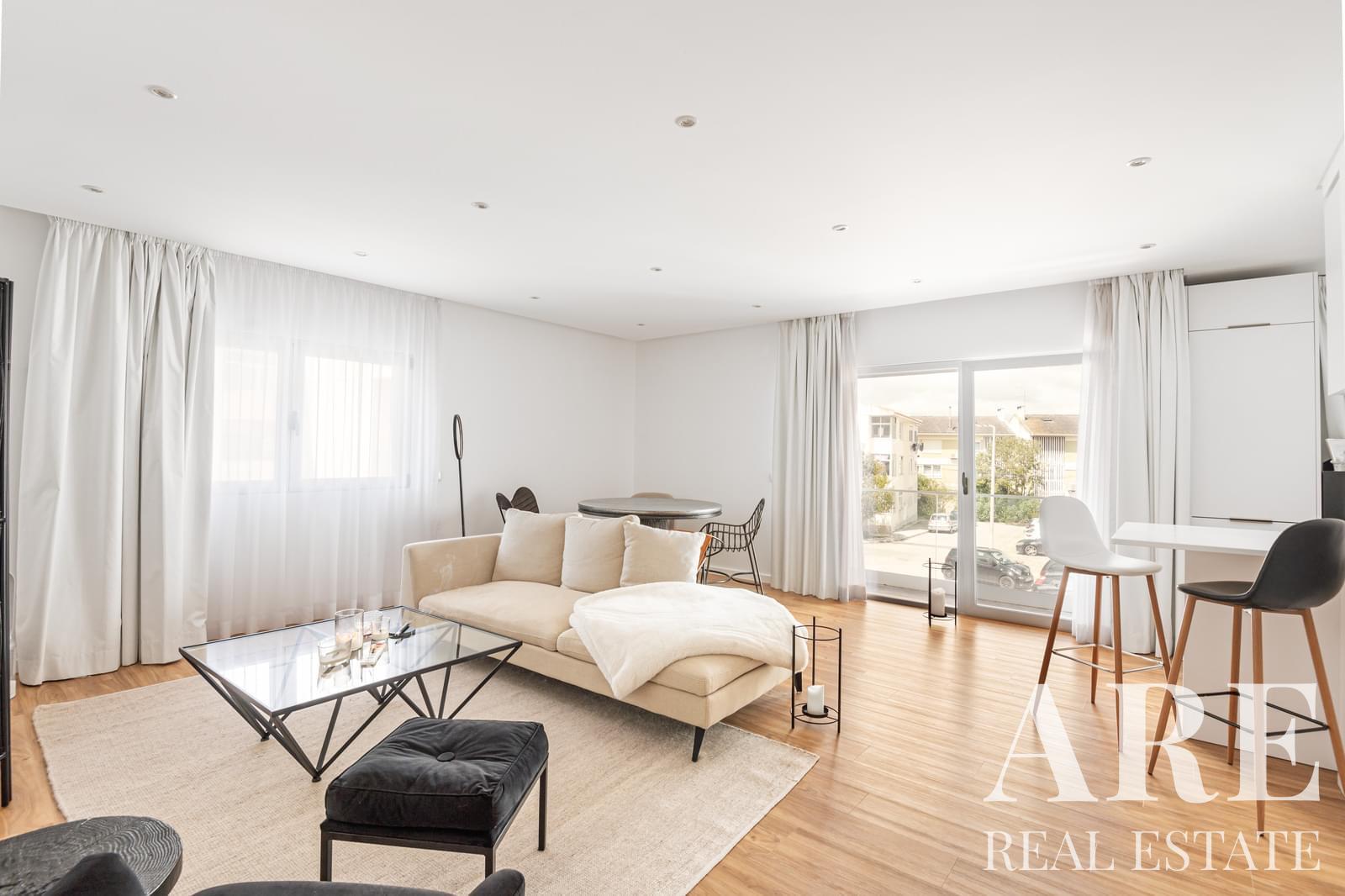
Apartment for sale in S. João do Estoril, Cascais
Asking Price599 000€Reference 37036 Bedrooms 2-bedroom Interior area 81.0 m2 -

Apartment for sale in Hilton Cascais Residences, Parede, Cascais
Asking Price875 000€Reference 33042 Bedrooms 1-bedroom Interior area 59.08 m2 -
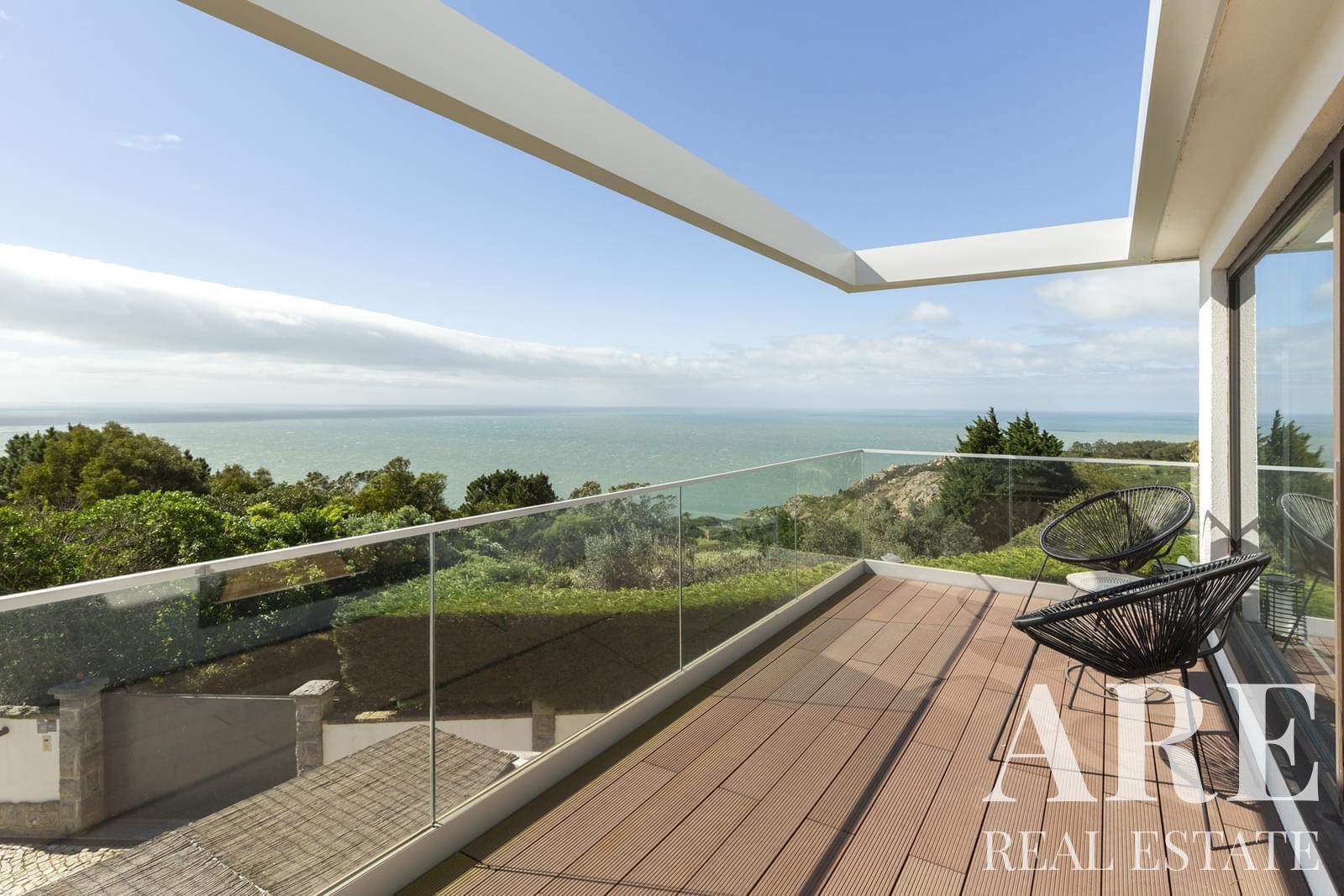
Villa for sale in Biscaia, Cascais
Asking Price1 750 000€Reference 37120 Bedrooms 3-bedroom Interior area 198.0 m2 -
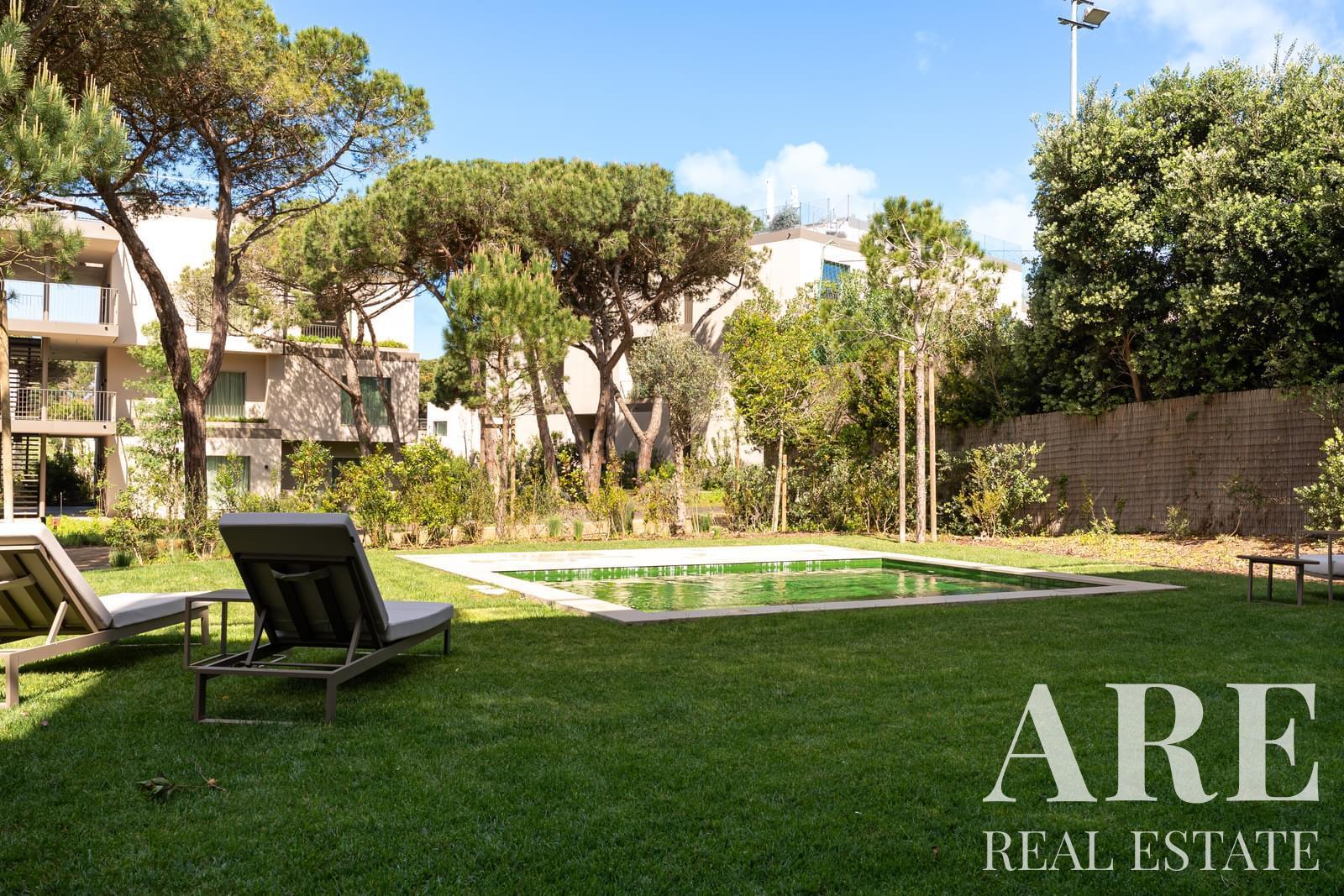
Apartment for sale in Quinta da Marinha, Cascais
Asking Price1 690 000€Reference 37081 Bedrooms 2-bedroom Interior area 133.9 m2 -
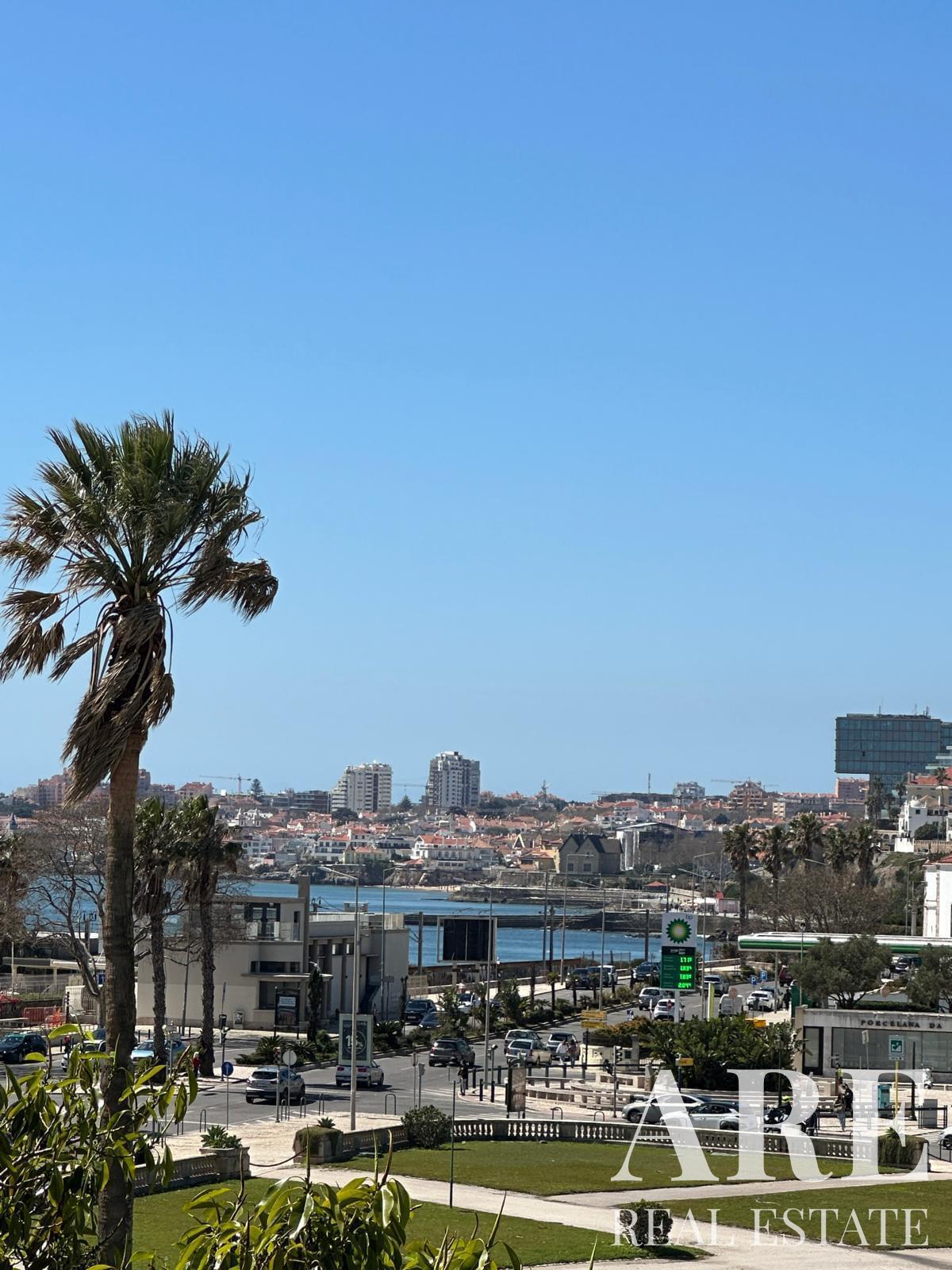
Studio for sale in Estoril, Cascais
Asking Price650 000€Reference 37038 Bedrooms Studio Interior area 50.0 m2 -
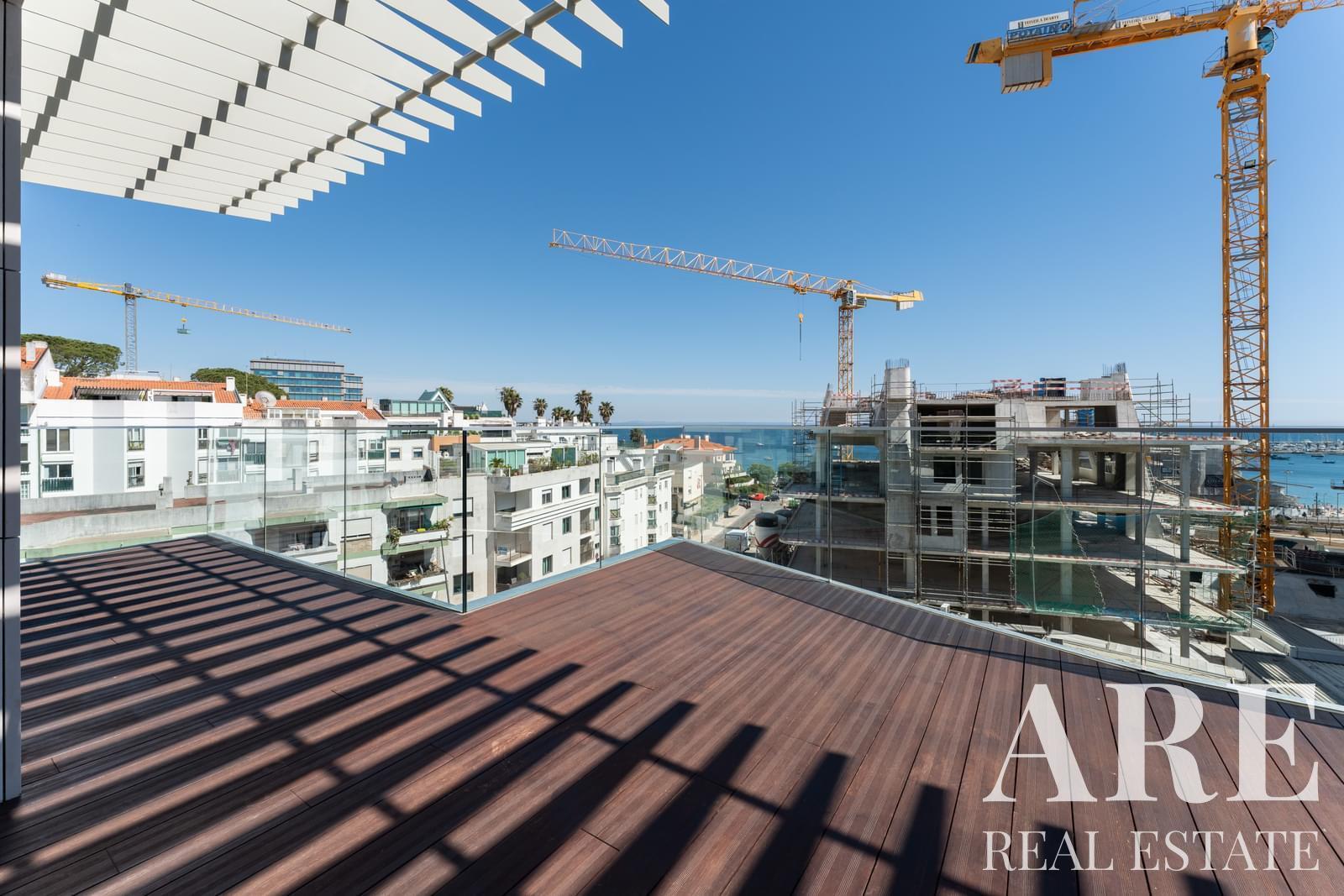
Penthouse Apartment for sale in Bayview, Cascais
Asking Price3 450 000€Reference 37033 Bedrooms 3-bedroom Interior area 179.0 m2



